I have always enjoyed reading about the history of defense innovations. Luckily, I recently discovered this content. Unfortunately, it was only available in Turkish, so I translated it into English using ChatGPT to share with you… Structured data is open source and can be found here.
Turkish defense innovations timeline goes back to the 3rd century BC. Here we go…
- 3rd Century BC
- 4th–5th Centuries
- 6th Century
- 6th-10th Centuries
- 8th Century
- 11th Century
- 12th Century
- 13th Century
- 14th Century
- 15th Century
- Change in Turkish Sword Form
- Starting of Bronze Foundry
- Usage of a Groove in a Sword
- Fatih Sultan Mehmed and the House of Damascus
- Establishment of Cebeci Ocağı
- Establishment of II. Murad’s Artillery Corps
- Tophane-i Âmire
- Arsenal
- Transition to Platoon Combat Method
- Conversion of Hagia Sophia into a Mosque
- Fatih Sultan Mehmed’s Firing of the Royal Cannons
- Atmeydanı Gunpowder Factory
- Haliç Shipyard
- Ali Usta’s Famous Two-Piece Ball
- Usage of Fatih Sultan Mehmed’s Cannon in the Battle of Meydan
- Casting of Great Siege Cannons
- Ottoman Soldier’s Armor
- SKY SHIP
- 16th Century
- The Peak of Turkish Sword
- The Emergence of Yatağan
- Invention of the Snake Trigger Mechanism
- Rifle Sight Usage
- Baştarda and Kadırga
- Ottoman Rule in the Mediterranean during the Yavuz Sultan Selim Era
- Accounting Regulations
- Yavuz Sultan Selim and the First Gunfire
- Establishment of the Admiral’s Shipyard during the Reign of Yavuz Sultan Selim
- 17th Century
- 18th Century
- Mustafa ibn Ibrahim and Bayramoglu Ali Aga
- Baruthane-i Amire
- The Chain Factory
- Establishment of Humbarahane during the reign of Sultan Mahmud I
- Speed Artillery Forge
- Imperial Naval Engineering School
- Copper Coating of the Ship Surface
- Ship Workshop
- Azadlu Gunpowder Factory
- Establishment of the Imperial School of Engineering during the reign of Selim III
- Launching of SELIMIYE KALYONU
- 19th Century
- Import-Substitution Approach
- Construction of the Great Pool
- Steam Era and Ottoman Navy
- The Commissioning of MAHMUDİYE KALYONU
- Tophane-i Amire Ministry of Marshalship
- Construction of the First Steamship
- Dolmabahce Rifle Factory
- Kırkağaç (Karaağaç) Fireworks Factory
- Iron and Steel Cannon Production in Tophane-i Âmire
- Capsule Mechanism Rifle
- Zeytinburnu Iron Factory
- Halic Yali Kosk Demir Fabrikasi
- Zeytinburnu Arsenal
- Shotgun
- Machine Gun
- Steam-powered MERİÇ and UTARİD Corvettes
- Ahmet Süreyya Emin Bey and the First Series of Field Artillery Shots
- Rifling Gun Production
- Needle Rifle
- Production of Weapons with Interchangeable and Compatible Parts
- Metallic Cartridge
- Tophane-i Ammunition Depot
- Zeytinburnu Cartridge Factory
- INTRODUCTION TO CHARITY
- Mantled (Ringed) Balls
- Patent Law
- First Domestic Torpedo
- ABDÜLHAMID and ABDÜLMECID Submarines
- Manufacturing of Shotguns and Small-Caliber Rifles
- Kâğıthane and Çobançeşme Shooting Ranges
- PELENG-I DERYA and NIMET
- First Drying Oven Machine
- Bakırköy Smokeless Gunpowder Factory
- HAMIDIYE FRIGATE
- 20th Century
- HAMIDIYE CRUISER
- Zeytinburnu Mauser Ammunition Factory
- Mahmut Şevket Pasha and the Beginning of Aviation in the Ottoman Empire
- General Directorate of Military Manufacturing
- Mahmut Şevket Pasha and the Aviation Commission
- The First Airplane Shot Down in History
- Airplane School
- Defense Industry during Atatürk and National Struggle Period
- Ankara Weapon Factory Rifle Operations
- Erzurum Workshop
- Ankara Cannonball Factory
- Antep Manufacturing Military Factory
- General Directorate of Military Factories
- Ankara (Gazi) Ammunition Factory
- Turkish Aeronautical Association
- Vecihi Hürkuş’s Aviation Ventures
- Sakir Zumre Bomb Factory
- TOMTAŞ Aircraft Automobile Engine Turkish Joint Stock Company
- Kayseri Aircraft Factory
- Eskisehir Aircraft Maintenance Factory
- Gölcük Naval Shipyard Command
- Kırıkkale Brass Factory
- Kırıkkale Artillery Ammunition Factory
- Kayas (Mamak) Capsule Factory
- Selahattin Reşit Alan’s Aviation Ventures
- Nuri Killigil Factories
- Elmadağ Gunpowder and Explosives Factory
- Mamak Gas Mask Factory
- Kırıkkale Steel Casting and Rolling Mill
- Nuri Demirağ Aircraft Factory
- Kırıkkale Rifle Factory
- Ata Nutku and GÖLCÜK Ship
- Kırıkkale Nitrocellulose Powder Factory
- YILDIRAY and ATILAY Submarines
- Kirikkale Ammunition Factory
- Battery Factory
- Etimesgut Aircraft Factory
- TCG BORA and TCG YILDIRIM
- Orman Çiftliği Aircraft Engine Factory
- Ankara Wind Tunnel
- Machine and Chemical Industry Corporation (MKEK)
- General Directorate of Machinery and Chemical Industry Corporation
- Entry to NATO and Military Aid
- National Defense Ministry Research and Development Department
- Huglu Hunting Shotguns Cooperative
- TÜBİTAK
- TCG KOÇHİSAR
- LCM8 and LCVP
- First Battleship
- Turkish Aerospace Industries Inc.
- Cyprus Peace Operation and Localization in Defense Industry
- Prof. Dr. Necmettin Erbakan
- Gölcük Naval Shipyard R&D Unit
- ASELSAN
- ISBIR Electric Industry Inc.
- TCG YILDIRAY (S-350)
- ASPILSAN
- HAVELSAN
- Turgut Özal
- TAI
- Modern Defense Industry After the Establishment of SSM
- TUSAŞ Engine Industries Inc. (TEI)
- SAGEB
- Turkish Armed Forces Strengthening Foundation (TSKGV)
- Delivery of 160 F-16s
- ROKETSAN
- TCG FATIH (F-242)
- Undersecretariat for Defense Industries (SSM)
- Joint Production Method
- HAVELSAN Technology Radar Industry and Trade Inc.
- SASAD
- Armored Combat Vehicle (ACV)
- Defense Technologies Engineering and Trade Inc. (STM)
- SF260 Training Aircraft
- TCG PREVEZE Type 209 T1 Submarine
- KALYON-5 National War Management System
- TCG Lieutenant Colonel Kudret Güngör (A-595)
- Delivery of 80 F-16s
- SAKARYA T-122 Multi-Purpose and Multi-Barrel Rocket Launcher System
- J-600 T YILDIRIM Tactical Ballistic Missile
- COUGAR AS 532 General Purpose Helicopter
- 2000
- 2001
- 2002
- 2003
- 2004
- 2005
- 2007
- 2008
- 2009
- 2010
- 2011
- 2012
- 2013
- 2014
- 2015
- 2016
- 2017
- Integration of SSM with the Presidency
- ROBOIK Unmanned and Autonomous Vehicle Design, Development and Prototype Competitions
- ATMACA Ship Killer Missile
- METE Özgün, Domestic Pistol Project
- ALPER Ship LPI Radar System
- MOSHIP Submarine Rescue Main Ship
- LST Amphibious Ship
- ORUÇ REİS Seismic Research Vessel
- MILDAR Fire Control Radar
- COBRA II 4×4 Tactical Wheeled Armored Vehicle
- KGK Wing Guidance Kit
- HGK Precision Guidance Kit
- MPT-55 National Infantry Rifle
- SSB INVESTMENTS
- DELTAV Space Technologies Inc.
- Turkey Cybersecurity Cluster
- 2018
- HÜRKUŞ-C Next Generation Light Attack/Armed Reconnaissance Aircraft
- VISIONARY YOUTH
- Frigate Modernizations
- TEKNOFEST
- Turkish Defense Industry Summit
- KIRPI II Mine Protected Vehicle
- ULAK Fourth Generation (4.5G/LTE Advanced) Communication System
- SARP Remote Controlled Stabilized Weapon System
- Export of Supply Tanker at Sea
- BORA MISSILE
- LGK Laser Guidance Kit
- ANKA-S Satellite-Controlled UAV
- RETINAR PTR Environmental Surveillance Radar
- TEBER Laser Guidance Kit
- BOZOK Laser Precision-Guided Mini Ammunition
- CAFAD Multi-Purpose Phased Array Radar
- PD170 Unmanned Aerial Vehicle Engine
- CATS Electro-Optic System
- Friend-Foe Identification and Introduction System Project
- KARGU Portable Rotary Wing Strike UAV System
- KARA SOJ (CORAL) Mobile Radar Electronic Warfare System
- ALTAY Main Battle Tank
- BATU ALTAY Power Group
- AKKOR Active Protection System
- SOM-J Joint Strike Aircraft Compatible National Cruise Missile
- SARPER Synthetic Aperture Radar
- OMTAS Medium Range Anti-Tank Weapon System
- TORK Torpedo Defense System Against Torpedoes
- EYDEP Industrial Competency Assessment and Support Program
- TS1400 Turbo Shaft Engine
- Presidency of the Republic of Turkey Defense Industry Presidency (SSB)
- 2019
- ŞAHİ, TUFAN and SAPAN Electromagnetic Launch System Projects
- T70 General Purpose Helicopter
- KERKES
- KAPLAN and PARS Armed Vehicles
- Tank Modernizations
- Preveze Class Submarine Half-Life Modernization Project
- UNMANNED GROUND VEHICLES (UGV)
- Laser Weapon System Projects
- TCG UFUK Test and Training Ship
- ED SYSTEM
- HIZIR 4×4 Tactical Wheeled Armored Vehicle
- MUKAS Communication Mixing and Deception Simulator
- SPRAYED BOUQUET LINE
- T700-TEI-701D ENGINE
- ADVENT Network-Supported Data Integrated Warfare Management System
- Rapid Patrol Boats and New SAT Boats
- AKINCI Attack Unmanned Aerial Vehicle
- 2020
- F-16 Modernizations
- AKSUNGUR Armed Unmanned Aerial Vehicle
- The First Turkish Spacecraft
- TRLG-230 Next Generation Artillery Missile
- SUNGUR Air Defense System
- DEFENSE NEWS TOP 100: 7 Turkish Companies Among Top Defense Giants
- PORTABLE AMMUNITION SYSTEMS
- Explosive Substance Production Facility
- URGENT INTERVENTION AND DIVING TRAINING BOAT
- KIRAÇ Next Generation Criminal Investigation Tool
- UNMANNED GROUND VEHICLES (UGV)
- KARAKULAK High Frequency Cutting and Listening System
- Satellite Launch Space Systems and Advanced Technologies Research Center
- YETEN Defense Industry Capability Inventory
- First Domestic Respirator
- 2021
- Ukraine Corvette Construction Project
- ULAQ USV Armed Unmanned Sea Vehicle
- ALBATROS-S Flock USV
- MEDIUM AND HEAVY CLASS UNMANNED GROUND VEHICLES
- PMT 7.62 National Machine Gun
- T129 ATAK PHASE-2 Attack and Tactical Reconnaissance Helicopter
- UTKU Next Generation Light Armored Vehicle Power Group Project
- BAYRAKTAR TB2 UAV
- HİSAR Air Defense Missile Systems
- LDG Logistics Support Ship
- SANCAK High Frequency Electronic Attack System
- ORKA Lightweight Torpedo
- AKYA Heavy Class Torpedo
- 2022
- T129 ATAK Helicopter
- BAYRAKTAR KIZILELMA (MİUS) Combat Unmanned Aerial Vehicle System
- BOYGA Rotary Wing UAV Carrying Air Munitions
- TOGAN Autonomous Rotating Wing Observer UAV System
- ŞAHİN 40 mm Physical Destruction System
- ELECTRONIC WARFARE SYSTEMS
- PMT 12.7 National Machine Gun
- MİLTAR National Screening System
- KMC Mounted Javelin Weapon System
- SUNGUR Portable Air Defense System
- KAPLAN MT Medium Weight Class Tank
- MMU Engineering Center
- MARLIN USV
- Sürü USV
- SANCAR USV
- SALVO USV
- PARS IV 6×6 Mine Protected Vehicle (MPV)
- Air Traffic Radar System
- Renewal of SSB Logo
- KTJ-3200 Turbojet Missile Engine
- 2023
- TCG ANADOLU Multipurpose Amphibious Assault Ship (LHD)
- KAAN National Combat Aircraft (NCA)
- GÖKDENİZ Close Air Defense System
- HÜRJET Jet Training and Light Attack Aircraft
- T929 ATAK II Attack Helicopter
- İMECE Sub-Meter Resolution Earth Observation Satellite
- KILIÇSAT Cube Satellite
- ZAHA Armored Amphibious Assault Vehicle
- Near Future
- ANKA III MIUS Combat UAV System
- T625 GÖKBEY General Purpose Helicopter
- GÖKTÜRK-3 SAR Earth Observation Satellite
- BOZDOĞAN — GÖKDOĞAN Air-to-Air Missiles
- HAVA SOJ Remote Electronic Support/Electronic Attack System on Air Platforms
- TÜRKSAT 6A Communication Satellite
- YTD New Type Submarine
- MUFS Micro Satellite Launch System Development Project
- TF-2000 Air Defense Frigate
- HURM Hybrid Space Rocket Engine Development Project
- NATIONAL COMBAT AIRCRAFT ENGINE
- NEW GENERATION KORAL Electronic Harp System Project
- MİLGEM 6, 7 and 8. Ships
- BAYRAKTAR TB3 Armed Unmanned Aerial Vehicle
- SIPER High Altitude Air Defense Missile System
- DERYA Naval replenishment combat support ship
- Istanbul Frigate I-Class Frigate
- ÖZGÜR Project
- KARAOK Short-Range Anti-Tank Weapon
- AESA Nose Radar
- ERALP Early Warning Radar System
- MERT and MERTER Portable Electronic Attack Systems
3rd Century BC
Development of Mete Han’s 10-unit Army System

In this system, the army was composed of 10, 100, 1,000, and 10,000 units called “tümen.” The date when Mete Khan developed this system, which forms the basis of today’s military organization, is accepted as 209 BC, and it was adopted as the establishment year of the Land Forces Command.
The Whistle Arrow was Invented by Temren and Mete Han

Turks, who have a rooted culture of horsemanship and archery, have been the most effective users of bow and arrow throughout history. Turks have produced arrows that can affect different types of armor by developing various temrens. Mete Khan invented an arrow type that can be easily tracked after it is launched because it makes a whistling sound while flying. This arrow, also known as the “sergeant arrow,” can be considered the ancestor of the “tracer bullet,” which is used for purposes such as tracking the number of bullets in the magazine, marking the target, or determining the direction.
Turkish Bow

Turkish bow is a powerful weapon made of wood, sinew, horn, and glue in the form of a “C” and set up in the opposite direction. The Huns produced double-curved bows with high range and impact force. This weapon, which is identified with the Turks throughout history, has been used from the Huns to the Ottomans.
Sword

The Turkish sword, which has played a significant role in the victories achieved by the Turks throughout history and has been used from the Huns era to the Republic era, has a very special mechanism. With its curved form, this sword is sharper than swords produced in the West and requires great skill and experience to use.
Zihgir
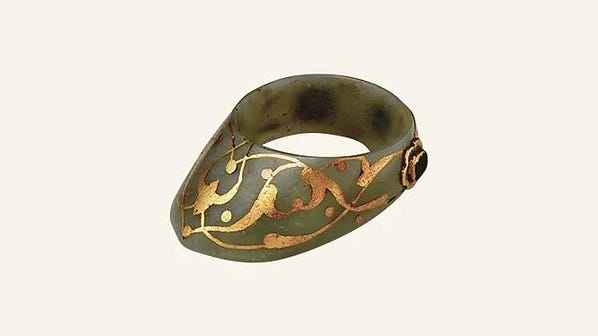
Archery has a long history. The thumb ring is worn on the thumb to easily pull the bowstring, shoot accurately, and prevent possible finger injuries.
Armor

The armor of the warrior found in a Hun kurgan, known as the “Golden Man” in literature, reveals how deeply rooted the history of Turkish armor is.
Stirrup

Turks increased their mobility on horseback and started to use cavalry forces more effectively with the stirrup they invented.
4th–5th Centuries
Chainmail and Plate Armor

Chain mail and metal plate reinforced armors used in Central Asia have reached as far as Central Europe through the Western Huns. Plate armors were called “kedim” and “iron armor” in ancient Turks, while breastplates were referred to as “say yaruk” and “kuyag”.
6th Century
Armored Horses

Archaeological studies have revealed that the Turkic people of the Caspian region used armor called “keçim” to protect and decorate their horses.
6th-10th Centuries
Cavalry Units

The spear cavalry units, which constituted the central power of the army in Göktürks, made it possible to easily cover long distances and move quickly on the battlefield.
8th Century
The Bending of the Sword Handle

The first observed formal change in the Turkish sword was the bending of the sword handle. This transformation enabled the sword to be used more powerfully and effectively.
The Bending of the Barrel

The barrel handle has a convex appearance bending in the opposite direction. This formal transformation, a revolution in cutting dynamics, has increased the sharpness of the Turkish sword.
11th Century
Arrows and Bows in Seljuks

Seljuk horsemen, who wore horn and bone or precious or base metals zihgirs on their thumbs, had the ability to shoot arrows in four directions while riding horses. Their mastery of the use of bows and arrows played a significant role in the Seljuks’ entry into Anatolia and their rapid conquest of Byzantine territories.
Turkish Sword Form

The Turkish sword has reached maturity in terms of form. In the following centuries, while this form was preserved, the Turkish sword continued to be developed as a cavalry weapon.
Farabli Ismail Cevheri’s Attempt to Fly

The Farab scholar Ismail Cevheri attempted to fly with wings he personally designed and produced by climbing up the minaret of the Ulu Mosque in Nishapur. As a result of this attempt, Ismail Cevheri, who was martyred, is known as the first aviation martyr.
The Trebuchet Used by Tughril Bey in the Siege of Malazgirt

The Great Seljuk ruler Tuğrul Bey used a very large trebuchet during the Siege of Malazgirt. Historical sources state that this trebuchet had 15 wheels and was operated by 400 people pulling its ropes.
Çaka Bey and His Fleet That He Built

Admiral Caka Bey of the Seljuk Empire had built a fleet of 40 ships on the Aegean coast. This fleet, which was later expanded, is considered the first nucleus of the Turkish Navy. In addition, the year 1081, in reference to the conquests made by Caka Bey in the Aegean islands, is accepted as the founding year of the Turkish Naval Forces.
12th Century
Crossbow Catapult

The poet, philosopher, mathematician, and astronomer Omar Khayyam, who lived during the reign of the Great Seljuk ruler Sultan Melikshah, recorded that the trebuchet (kus-kencir) used by the Seljuks for shooting arrows had a weight of 500 kg.
Armored War Elephants and Weapon Production

Ghaznavids were the first Muslim state to use armored war elephants. Also, during the Ghaznavid period, the city of Bust/Leškergāh became a center for weapon production and a blacksmithing hub.
Sirajuddin’s Attempt to Fly

Siracüddin, who was in the retinue of the Seljuk Sultan Kılıçarslan, who came to Istanbul to engage in diplomatic contacts with the Roman Emperor, attempted to fly by taking wings during the celebrations held at the Hippodrome. However, as a result of this attempt, Siracüddin, like İsmail Cevherî, was also martyred.
13th Century
Siege Weapons

The Seljuks used heavy siege weapons such as mangonel and arrahda. They also used the debbebe weapon to protect their soldiers near the walls from enemy attacks.
Seljuk City Defense

The Seljuks, as in the example of Uluborlu, used the Byzantine castles they captured in the cities for defense purposes later on. Sivas, which is known to have thick and high walls and hosted weapon workshops and warehouses during the Seljuk period, is one of these cities.
Al-Jazari and The Book of Ingenious Devices

İsmail al-Jazari, who is considered a pioneer in the fields of cybernetics and robotics, wrote his work known as Kitab al-Hiyal, which includes detailed descriptions and drawings of numerous devices and machines, including automated devices.
Seljuks as a Naval Power
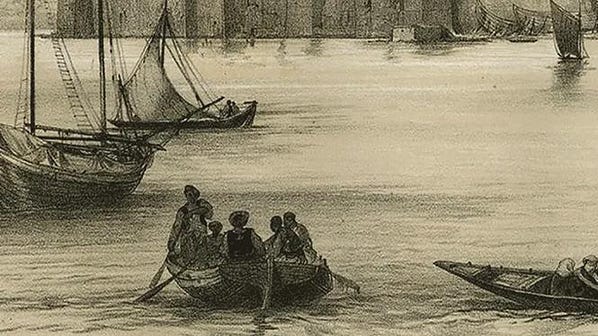
The Seljuks, who conquered Sinop and gained an important port in the Black Sea, built a navy here using local resources.
Use of Iron Balls in Trebuchets
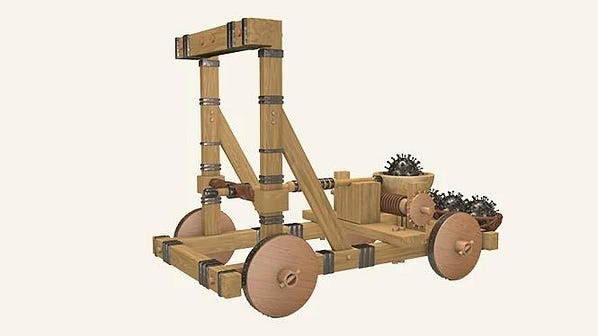
During the sieges that took place during the reign of Anatolian Seljuk Sultan Alaeddin Keykubad, instead of stone bullets, iron bullets began to be thrown with trebuchets.
Alaeddin Keykubad and Alaiye Shipyard

Seljuk Sultan Alaeddin Keykubad, who conquered Alanya, started shipbuilding activities by reorganizing the Byzantine shipyard here.
Alaeddin Keykubad and the First Overseas Campaign

The first overseas expedition in Turkish history was organized by Alaeddin Keykubad. The Seljuk army, which set sail to the Black Sea with the ships commanded by Kastamonu frontier lord Hüsameddin Çoban, conquered Suğdak located in Crimea.
14th Century
Use of Firearms

The Ottoman Turks started to use firearms effectively. Additionally, they developed their own artillery casting techniques and used the cannons they produced with these techniques in siege wars.
The Use of the Cannon in Battles and Sieges

Cannon was first used on the battlefield by the Ottomans in the second half of the 14th century. The siege where the Ottomans first definitively used the cannon is the Siege of Istanbul during the reign of Bayezid I.
Gazi Celebi and the Underwater Attack Weapon

Gazi Çelebi, the ruler of Pervaneoğulları, developed and used a weapon with a drill mechanism that secretly approached ships and attacked them from underwater, causing holes in the hull.
Mürsel Alp Bey and Karamürsel Shipyard

The first shipyard of the Ottoman Empire was built during the reign of Orhan Gazi in Karamürsel, which is now a district of Kocaeli. Mürsel Alp Bey, the founder of the shipyard, was the first admiral, that is, the commander of the navy, of the Ottoman Empire.
Aydınoğlu Umur Bey and the Izmir Shipyard

Aydınoğlu Umur Bey, after conquering İzmir, had the shipyard left by Byzantines here reorganized and activated under the supervision of a master named Hoca Selman.
Aydınoğlu Umur Bey’s Ships Walking on Land
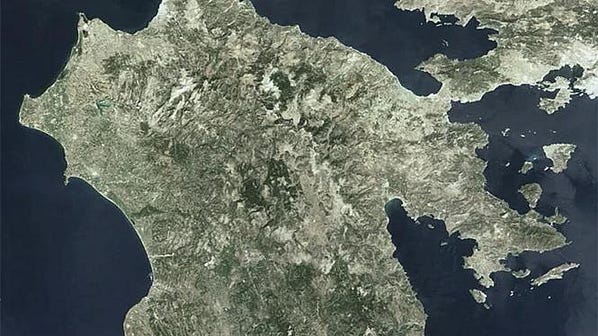
Aydınoğlu Umur Bey led his ships through the Corinth Isthmus in Greece on foot during the Epirus Campaign.
Saruca Paşa and the Gallipoli Shipyard

The Gelibolu Shipyard, which was the first large and organized shipyard of the Ottoman Empire, was built with the efforts of Saruca Pasha. Many ships were built in the shipyard until the era of Yavuz Sultan Selim.
15th Century
Change in Turkish Sword Form

In this period, the barrel has lengthened, while the blade has widened and become heavier. This transformation has led to the Turkish sword having a more menacing appearance.
Starting of Bronze Foundry

The Ottomans started producing bronze cannons in various sizes and dimensions, mostly in mobile artillery workshops.
Usage of a Groove in a Sword

In order to lighten the barrel which became heavier due to the change in the form, the groove, which has been rarely used until this period, has been extended and deepened.
Fatih Sultan Mehmed and the House of Damascus

Fatih Sultan Mehmed established an armory for sword production after the conquest of Istanbul. The armory was demolished in the 1640s and since then, sword production has largely been carried out in private workshops.
Establishment of Cebeci Ocağı

The Cebeci Corps was established to meet the needs of the army’s weapons, to repair and maintain the weapons, and to transport them to the battlefield when necessary.
Establishment of II. Murad’s Artillery Corps

Artillery Corps was established by II. Murad at a time when artillery was not yet a basic component in European armies.
Tophane-i Âmire

Tophane-i Amire, one of the first cannon foundries in the world, became operational after the conquest of Istanbul and was expanded with the addition of new buildings over time. After the buildings were demolished in 1743, it was rebuilt and gained its current appearance. Tophane-i Amire, which was modernized during the reign of Sultan Mahmud II, maintained its importance until the end of World War I. The machines and equipment here were moved to military factories established in Ankara during the National Struggle.
Arsenal

The arsenal estimated to have been established in Unkapanı after the conquest of Istanbul is referred to as Tüfenk Dârussınaası in historical documents. The structure, renamed as Tüfekhane-i Âmire from the 17th century onwards, underwent various repairs due to fires and gave way to the modern rifle factory established in Dolmabahçe in 1838.
Transition to Platoon Combat Method

Czech commander Jan Zizka developed a new method of warfare in 1420 by using wheeled battle wagons, which have ancient origins, together with firearms. The Ottoman Turks effectively employed this method, known as the Tabur Cengi (Wagenburg), in the Battle of Varna in 1444.
Conversion of Hagia Sophia into a Mosque

Aya Irini, located next to Hagia Sophia, was used as an arsenal for storing loot and weapons after the conquest of Istanbul. The building started hosting the collection of ancient weapons in 1846, and later became home to the Imperial Museum in 1869. The official establishment date of the Military Museum, which was established in Aya Irini in 1908, is accepted as 1453, when the building was converted into an arsenal.
Fatih Sultan Mehmed’s Firing of the Royal Cannons

Fatih Sultan Mehmed had master craftsmen and engineers, including Hungarian Urban and Saruca Sekban, cast giant cannons weighing between 200 to 550 kg and capable of firing balls, as well as massive 15–17 ton cannons at the Edirne arsenal. The use of these cannons, including the shahi cannons used in the conquest of Istanbul, demonstrated the vulnerability of flat castle walls against firearms, marking a turning point. As a result, a military fortification type called “Trace Italienne” was developed in Italy in 1515, known as a star-shaped trench in Turkish. Additionally, the effective use of cannons led to the disappearance of the trebuchet weapon from the battlefield.
Atmeydanı Gunpowder Factory

The first Ottoman gunpowder factory was established in Atmeydanı after the conquest of Istanbul. During the reign of II. Bayezid, the Atmeydanı Gunpowder Factory was destroyed in a lightning-caused fire, so the Kağıthane Gunpowder Factory was built.
Haliç Shipyard

After the conquest of Istanbul by Fatih Sultan Mehmed, the old Byzantine shipyards in the Golden Horn were organized and shipbuilding activities began by adding new facilities to them.
Ali Usta’s Famous Two-Piece Ball

This cannon, which served the Ottoman army for three centuries, inflicted heavy losses on the British navy during the 1807–1809 Ottoman-British wars. The British wanted to buy Ali Usta’s famous cannon during Queen Victoria’s reign, and Sultan Abdulaziz gifted the cannon to the British during his 1867 European trip.
Usage of Fatih Sultan Mehmed’s Cannon in the Battle of Meydan

Fatih Sultan Mehmed demonstrated that cannons could be effectively used not only in sieges but also in field battles during the Battle of Otlukbeli.
Casting of Great Siege Cannons

In the Ottoman Empire, cannon casting could be done not only in the foundries but also in places where sieges were to be carried out. For example, during the Siege of Shkodra, it is known that a cannon capable of firing 702 kg stone balls was cast.
Ottoman Soldier’s Armor

The Ottoman armor set consisted of a helmet, visor, shirt, breastplate, knee guards, shin guards, arm guards, and hand guards, with a weight ranging from 45 to 50 kg.
SKY SHIP

GÖKE, a large ship with sails, oars, and three holds, was built by Kemal Reis, the uncle of Piri Reis, in the style of Venetian ships.
16th Century
The Peak of Turkish Sword

The barrel of the Turkish sword, which becomes slightly more curved, has reached the highest level in terms of both trigger angle and form.
The Emergence of Yatağan

Yataghan is a type of cutting weapon specific to the Turks, with a concave blade. It was used by the Levents as well as the Janissaries during peacetime, and emerged in Ottoman territories in the 16th century and was used until the early 19th century.
Invention of the Snake Trigger Mechanism

In the mid-16th century, the hand-filled guns used in the Ottoman army were equipped with a trigger mechanism called “yılankavi” instead of holding the fuse by hand. This allowed the hand holding the fuse to be free and the gun became more practical.
Rifle Sight Usage

Sights have been added to rifles, which increases their accuracy by helping to align the front sight with the target using a notch located behind the barrel of firearms, sometimes enclosed in a circle, and called a “gez” in Turkish.
Baştarda and Kadırga

The Imperial Shipyard has been actively engaged in shipbuilding and maintenance-repair activities since its establishment. The ships built in the shipyard have varied according to the naval warfare and shipbuilding engineering technologies of the period. The most common types of ships built in the 16th century were bastarda and galley.
Ottoman Rule in the Mediterranean during the Yavuz Sultan Selim Era

During the reign of Yavuz Sultan Selim, 100 galleys, 20 foists, 21 barques, 3 large-sailed and 6 caravels were built in the Tersane-i Âmire shipyard. As a result, the Ottomans, who were originally a land-based empire, became one of the most important naval powers in the Mediterranean.
Accounting Regulations

The Edirne, Istanbul, and Bursa ihtisab (taxation) regulations, including standards for numerous products including firearms, were legally established at a very early period.
Yavuz Sultan Selim and the First Gunfire

Yavuz Sultan Selim arranged the Janissaries in nine rows for the first time in the 1514 Battle of Chaldiran and made the first use of volley fire in the world, thus making history.
Establishment of the Admiral’s Shipyard during the Reign of Yavuz Sultan Selim

During the reign of Yavuz Sultan Selim, the shipyard in the Golden Horn was expanded to include 100 docks and a capacity of 200 galleys. As a result, the Tersane-i Amire shipyard quickly became the main base for Ottoman naval activities.
17th Century
Hezarfen Ahmed Çelebi’s Attempt to Fly

In Evliya Çelebi’s Seyahatname, it is mentioned that Hezarfen Ahmed Çelebi flew from Galata to Doğancılar Square in Üsküdar using a wing-like device attached to his arms.
The Flying Attempt of Lagari Hasan Çelebi

In Evliya Çelebi’s Seyahatname, it is narrated that Lagari Hasan Çelebi flew about 300 meters with a rocket weighing 50 okka of gunpowder and 7 bullets with the help of wings attached to his arms when the gunpowder ran out. The rocket was an unguided missile with an external geometry that reduces air friction and is mechanically guided during firing from a weapon system, as explained by the highlighted word. Lagari Hasan Çelebi’s flight took place on Sarayburnu.
Usage of Fire Ships

The Ottomans added the fire ships used against them during the Siege of Crete to their navy. Fire ships are ships filled with combustible materials, used to set enemy ships on fire.
Transitioning to Galleon Type Ships

In the Ottoman navy, the oar-powered galleys were replaced by sail-powered galleons.
18th Century
Mustafa ibn Ibrahim and Bayramoglu Ali Aga

The Clerk of the Bombardier Guild, Mustafa ibn Ibrahim, painted a panorama of the military industry of the period with the information he provided in his work, Fenn-i Humbara. The Chief of the Bombardier Guild, Bayramoglu Ali Aga, provided information on the art of war and the tools used in war in his work, Ummu’l-Gaza fi Tedbiril-Harb ve Levazimihâ. Additionally, he also described the weapons he invented. For example, he stated that he invented a type of pipe that not only fired like the pipes used by bombardiers, but also fired bullets from ten rifles attached to it.
Baruthane-i Amire

After the gunpowder factories established in Atmeydanı and Kâğıthane stopped their activities due to fires, a new gunpowder factory was built in Bakırköy under the name of Baruthane-i Âmire. This gunpowder factory, which started operating in 1702, was also known as the Istanbul Gunpowder Factory. In addition to the centers in Istanbul, gunpowder factories were established in Gelibolu, Egypt, Thessaloniki, Baghdad, and Izmir, especially to meet the gunpowder needs of the navy.
The Chain Factory

A “lengerhane” was established within the shipyard for the production of “lengerler” (chains thrown into the sea with anchors at their ends) and in the past, the Ottoman Empire used to procure the largest “kalyon” lengerler from abroad. Starting from 1708, they began to produce these chains themselves.
Establishment of Humbarahane during the reign of Sultan Mahmud I

After becoming a Muslim and being appointed as the head of the Humbaraci Corps in the Ottoman Empire, the French engineer Comte de Bonneval gained fame as Humbaraci Ahmed Pasha. Upon the order of Sultan Mahmud I, he established a military school, or humbarahane, to train artillery soldiers. In addition to education, production activities such as casting of bombs and short-barreled guns, known as havan, were also carried out here. The school continued its educational activities until the opening of the Military Engineering School in 1795.
Speed Artillery Forge

During the ongoing Ottoman-Russian War, the first artillery school was opened under the leadership of Baron de Tott, and the Rapid Artillery Corps was established.
Imperial Naval Engineering School

The Naval Engineering School (Mühendishane-i Bahrî-i Hümayun) was established in an empty hangar located in the Haliç Shipyard during the 1768–1774 Ottoman-Russian War, due to the recognition of the army’s technical weakness and the need for qualified personnel. The necessary books and tools for education were brought from Paris, and shipbuilding, fortification, and map lessons were added to the curriculum, which was primarily focused on mathematics and geometry. The engineering school, which became the nucleus of the Naval War College, was permanently relocated to Heybeliada in 1846.
Copper Coating of the Ship Surface

In the period of III. Selim, the surface of the ships that came into contact with water was covered with copper. With this method, the lifespan of the ships was extended and they were able to travel faster.
Ship Workshop

A workshop has been opened where models of ships to be constructed are drawn and their measurements and designs are made.
Azadlu Gunpowder Factory

The construction of Azadlu Powder Mill was completed in 1794 and, like Baruthane-i Amire, black powder production was carried out here for many years. Azadlu Powder Mill and Bakırköy Powder Mill, which were restructured in 1836, were modernized with machinery and equipment imported from England.
Establishment of the Imperial School of Engineering during the reign of Selim III

The Kara Mühendishanesi (Imperial School of Military Engineering), the second engineering school after the Ottoman Naval Engineering School (Mühendishane-i Bahrî-i Hümayun), was established in the Hasköy district during the reign of Sultan Selim III as part of the Nizam-ı Cedid (New Order) reforms. Unlike the Naval Engineering School, foreign teachers were not employed in the school, which was modeled after similar institutions in France and Austria. A library and printing press were established within the school for the printing of textbooks and the translation and creation of educational materials. The Kara Mühendishanesi played an important role in the formation of the nucleus of the Military Academy.
Launching of SELIMIYE KALYONU

SELIMIYE KALYONU, a ship of 51 meters in length with three galleys, a capacity of 1,200 personnel, and containing 122 cannons, was the largest warship ever built for the Ottoman Navy at that time.
19th Century
Import-Substitution Approach

With the classical period, the Ottoman Empire largely met its defense needs with its own resources, but starting from the 1820s, it began to procure machinery and equipment from abroad and bring in experts to keep up with rapidly changing weapon technologies. The most notable feature of the Ottoman defense industry in the 19th century was first importing new technologies and then seeking ways to produce them domestically.
Construction of the Great Pool

Construction began at the Imperial Shipyard for the maintenance and repair of the largest sailing and rowing warships, the galleons. The Great Dock was completed for this purpose. With the construction of the first floating dock in 1827 and the use of steam engines in 1832, the Imperial Shipyard became a modern industrial structure.
Steam Era and Ottoman Navy

The ship named SWIFT, which was purchased from England during the reconstruction process of the Ottoman navy that suffered great damage in the Battle of Navarino in 1827, became the first steamship in the Ottoman navy.
The Commissioning of MAHMUDİYE KALYONU

The three-hold MAHMUDIYE cargo ship, measuring 76 meters in length and weighing 5,553 tons, was built by Engineer Mehmet Efendi and Architect Mehmet Kalfa in Tersane-i Âmire. It was the largest warship in the world at that time, being a galleon. It had 128 cannons and could accommodate 1,280 personnel.
Tophane-i Amire Ministry of Marshalship
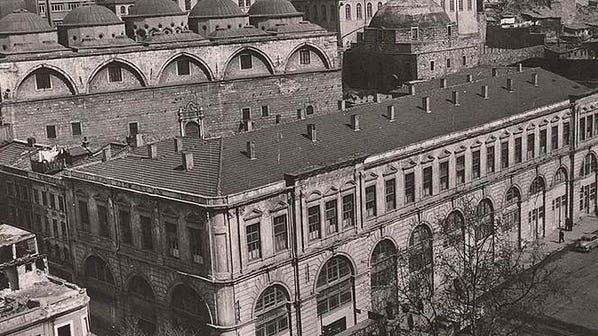
After the abolishment of the Janissary organization, the Tophane-i Amire Ministry was established to centralize activities related to defense industry. The institution, responsible for the production and import of all kinds of equipment for the army, as well as the establishment and construction of new production units, managed all defense industry activities.
Construction of the First Steamship

ESER-İ HAYR, the first steamship built in the Ottoman Empire and used both for passenger transportation and as a warship, was constructed by American architect Foster Rhodes at Aynalıkavak Shipyard and launched from there. MESİR-İ BAHRİ followed ESER-İ HAYR in 1838, and TAİR-İ BAHRİ in 1839.
Dolmabahce Rifle Factory

The construction of Dolmabahçe Rifle Factory was completed in 1838. Steam engines were used in the factory, which enabled the production of rifle bayonets to be carried out on a mass scale. In this respect, the factory represents a successful example of the transition from traditional technology to new technology in Ottoman industry.
Kırkağaç (Karaağaç) Fireworks Factory

During the reign of Selim III, the wooden gunpowder factory began production with new technology after experts and machinery were brought from England in the early 1840s, and expanded its production area. In the modernized gunpowder factory, which was modernized in 1852 and the 1870s, initially shotguns and needle rifle bullets were produced, and from 1872 onwards, production of metallic cartridges with caps began.
Iron and Steel Cannon Production in Tophane-i Âmire

With the cast ovens purchased from England and other machinery and equipment, iron cannons began to be produced at Tophane-i Âmire. As a result, bronze cannons were replaced by iron cannons and long-range and rifled howitzers could be produced from the 1850s onwards. After 1861, steel cannons made of cast iron replaced forged iron cannons.
Capsule Mechanism Rifle

With technical personnel brought from Belgium along with necessary machines and equipment, production of capsule mechanism rifles started at Dolmabahçe Tüfekhanesi from 1847 onwards.
Zeytinburnu Iron Factory

Founded under the leadership of Barutçubaşı Ohannes Dadyan with the aim of breaking free from foreign dependency in iron supply and meeting industrial and other infrastructure needs with local resources. The machinery and equipment of the factory were procured from England.
Halic Yali Kosk Demir Fabrikasi

Zeytinburnu Iron Factory was established to reduce the burden of the factory and to produce iron tools and equipment needed by public facilities. In addition to these, metal molds, iron pipes, elbows, bracelets, and harnesses were also produced in the factory. During the Crimean War, the factory was allocated to the British for the repair and maintenance of machines belonging to allied ships. After the war, the factory was re-nationalized and maintenance work on machines belonging to Ottoman ships was carried out here.
Zeytinburnu Arsenal

Due to the inadequate production capacity of Dolmabahçe Rifle Factory, the machinery and equipment were transferred to the rifle factory within Zeytinburnu Iron Factory, along with machinery and equipment purchased from Belgium. After the 1850s, the Zeytinburnu region became an industrial production center along with Tophane and Haliç.
Shotgun

In 1857, a decision was made to equip all units in the Ottoman army with sheshane (shotgun) rifles. Initially imported from Belgium and France, these weapons began to be produced at the Tufekhane from the 1860s onwards, and existing shotguns were later converted into sheshane rifles.
Machine Gun

The machine gun, invented by American inventor Richard Jordan Gatling, was first tested during the American Civil War. The Ottoman Empire purchased this weapon during these years.
Steam-powered MERİÇ and UTARİD Corvettes

The MERİÇ and UTARİD steam corvettes, which were part of the Ottoman navy, were converted into national capabilities.
Ahmet Süreyya Emin Bey and the First Series of Field Artillery Shots

The first field gun with a rapid-fire mechanism, designed by Ahmet Süreyya Emin Bey in 1866, was manufactured at the Zeytinburnu Factory in 1868. Although it was entirely produced locally, the mass production of this gun could not be achieved. The gun has a diameter of 8 mm and a length of 192.5 cm and is loaded from the tail. It is currently on display at the Istanbul Military Museum.
Rifling Gun Production

The necessary machinery and equipment for the production of the rifled gun, invented by American inventor Jacob Snider, was supplied. In addition, machines were also imported from the USA and rifling began to be done on existing guns at the Zeytinburnu Factory.
Needle Rifle

The rifle, invented by German inventor Johann Nicolaus von Dreyse, had a needle ignition system and was a muzzle-loaded, easily loaded weapon. The Ottoman Empire first imported this rifle, which provided high accuracy, and after the 1870s, it transformed Enfield rifles belonging to the army into rifles with needle ignition systems and muzzle-loading. Shortly thereafter, more advanced needle rifles, such as the American-made Martini-Henry model, began to be used.
Production of Weapons with Interchangeable and Compatible Parts

The Ottoman Empire first imported firearms manufactured in the United States, which were made using a production technology based on the principle of having compatible parts with different weapons. They then started producing weapon parts by bringing the necessary equipment from abroad. This made it possible to replace broken parts of the firearms and to use them for a long time.
Metallic Cartridge
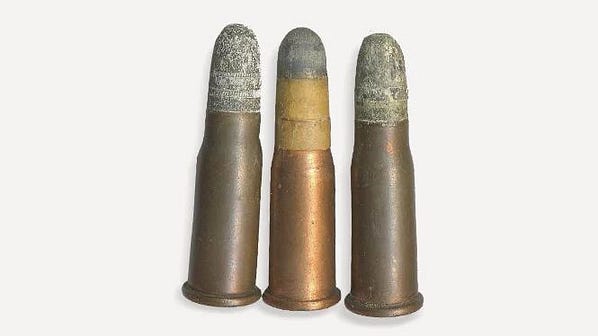
In the 1870s, ammunition developed in Europe and Boxer cartridges with paper casings that had a lifespan of one or two uses were used in the Ottoman army. However, these were soon replaced by more durable metal capsules, which were fired by a special gunpowder and designed to ignite with the strike of a hammer or needle, and could hold up to 15–20 shots and be refilled for reuse.
Tophane-i Ammunition Depot

The rifle factory established in Zeytinburnu for the production of Snider model needle guns was modernized in the early years of the reign of II. Abdülhamid after the Martini-Henry rifles were selected as the main infantry rifle. The Zeytinburnu Rifle Factory was later moved to Tophane-i Âmire.
Zeytinburnu Cartridge Factory

It was decided to establish a new fireworks factory in Zeytinburnu due to the insufficient capacity of the Kırkağaç Fireworks Factory to meet the demand for fireworks production. Here, metallic fireworks production was started using machinery and equipment imported from Europe.
INTRODUCTION TO CHARITY

The first armored corvette built in Tersane-i Amire was launched as MUKADDEME-I HAYR.
Mantled (Ringed) Balls

The rifled guns produced by the German Krupp company in 1866 were made resistant to new types of high destructive gunpowder by adding one or two layers of extra steel to the rear end of the barrel, thereby increasing the thickness of the metal. The Ottoman Empire purchased this weapon for the first time in 1876 and successfully used it in the Defense of Plevna.
Patent Law

The Ottoman Empire obtained an early version of modern patent law with the implementation of the Patent Certificate Law in 1880. Inventions made in various fields, including military products, were legally protected under this law. The law underwent some changes over time and remained the primary legal basis for patents in Turkey until 1995.
First Domestic Torpedo

The first domestic torpedo produced by Bahriye Kurmay Lieutenant Commander Davut Bey was tested.
ABDÜLHAMID and ABDÜLMECID Submarines
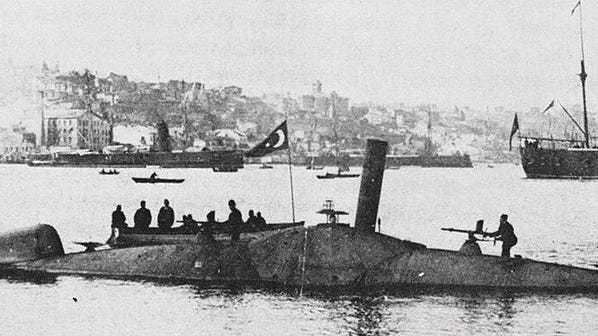
The ABDÜLHAMİD and ABDÜLMECİD submarines, which were ordered from England in 1886 and assembled with local resources at the Tersane-i Âmire, were 31 meters long, 3.6 meters wide, and weighed 160 tons. ABDÜLHAMİD was the first submarine in the world that could fire torpedoes, and was launched in 1886, while ABDÜLMECİD was launched a year later in 1887.
Manufacturing of Shotguns and Small-Caliber Rifles

Shortly after the purchase of Mauser rifles from Germany, these types of firearms began to be produced at Tophane with imported machinery and equipment.
Kâğıthane and Çobançeşme Shooting Ranges

The Kağıthane Shooting Range, built during the reign of Abdul Hamid II, tested light weapons while the Çobançeşme Shooting Range tested heavy weapons.
PELENG-I DERYA and NIMET

The first PELENG-I DERYA and NIMET with torpedo gambots, which are war weapons that contain explosives at the front and can be launched from underwater and above water, were launched into the sea.
First Drying Oven Machine

The first steam sterilizer was manufactured at the Imperial Arsenal. These machines, which were produced thereafter, were used for disinfection purposes in civilian and military hospitals.
Bakırköy Smokeless Gunpowder Factory

The factory established within the Bakırköy Baruthanesi initially couldn’t produce enough. Therefore, it was decided to modernize the factory and increase its capacity. The tender was awarded to the German company called Köln-Rottweil. As a result of the work completed in 1904, the factory started producing 300–350 kg of gunpowder daily.
HAMIDIYE FRIGATE

Hamidiye Frigate was domestically constructed in the Royal Shipyard (Tersane-i Âmire). The sailship had a central battery and armored section for holding weapons.
20th Century
HAMIDIYE CRUISER

The cruiser named HAMIDIYE, which was built in England and equipped with guns for purposes such as monitoring sea routes, reconnaissance, and guiding air and naval fleets, joined the Ottoman Navy.
Zeytinburnu Mauser Ammunition Factory

The factory in Zeytinburnu was modernized through technology transfer from Germany to meet the ammunition needs of automatic rifles.
Mahmut Şevket Pasha and the Beginning of Aviation in the Ottoman Empire

Mahmut Şevket Pasha, one of the figures who understood the importance of aviation in the Ottoman Empire, sent officers to France for aviation training. Also, thanks to his initiatives, the first demonstration flights by balloon and airplane were carried out in Istanbul.
General Directorate of Military Manufacturing

Following the declaration of the Second Constitutional Era, administrative changes were made in the bureaucracy and the position of müşiriyet was abolished. The existing military production and maintenance centers were reorganized under the General Directorate of Military Manufacturing.
Mahmut Şevket Pasha and the Aviation Commission

The Tayyare Commission, the first official aviation organization in the Ottoman Empire, was established through the efforts of Mahmut Şevket Paşa. The commission, which formed the basis of the Turkish Air Force, was led by Staff Colonel Süreyya (İlmen) Bey.
The First Airplane Shot Down in History
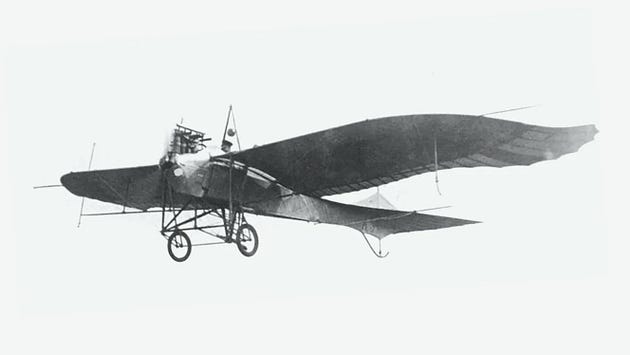
During the Tripolitanian War, which witnessed many critical developments in military aviation history such as the first reconnaissance flight, the first air raid, and the first air-ground operation, the first plane in history was shot down by the Turks with ground fire.
Airplane School

The Tayyare Mektebi, established in the Ottoman Empire for the development of military aviation and being the first aviation training institution, was opened. In this context, three Deperdussin, six REP, and two Bleriot planes were purchased from France, two Bristol and two Harlan planes from England, and two winged Mars Doppeldecker planes from Germany, creating a fleet of 17 aircraft.
Defense Industry during Atatürk and National Struggle Period

Efforts towards establishing a national defense industry have been ongoing since the past, and they continued during the National Struggle despite all economic and technological challenges. In this context, factories were established for weapon repair, production of ammunition and chemical substances. As of 1921, military production and repair works in various regions of the country were managed from a single center by the Directorate General of Military Factories. Mustafa Kemal Ataturk expressed the point reached by the Turkish defense industry within just a few years with the following words in his opening speech to the Grand National Assembly on March 1, 1922: “Today, it is possible to produce all kinds of necessities. Preparation and production of large quantities of artillery and infantry ammunition and bombs have been ensured in newly established bullet and cartridge factories. Many tools and equipment such as modern communication tools and fortification vehicles have been added to the army ranks by telegraphs.” Efforts towards establishing a national defense industry continued in the early years of the Republic with the activation of many factories, institutions, and organizations, particularly in the aviation field.
Ankara Weapon Factory Rifle Operations
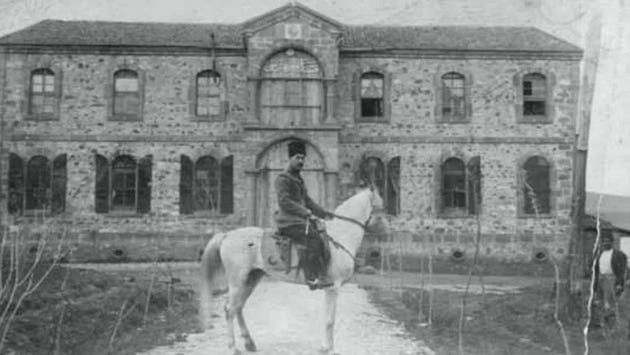
The factory established for the repair of cannons and rifles during the War of Independence was reinforced with machines brought from the occupied Istanbul. Until the opening of the Kırıkkale Rifle Factory in 1939, a total of 150 thousand rifles belonging to the Turkish army’s land, sea, and air forces were repaired here. In 1950, the outdated technology business was transferred to MKEK. Afterwards, production for civilian needs started at the factory, and various vehicle and machine manufacturing from garbage trucks to olive crushing machines were carried out.
Erzurum Workshop

During the independence war, gun repair units from the Eastern Front got unified in Erzurum Firdevsoglu barracks. Soldiers capable of repairing guns, forging knives, and daggers moved to this workshop.
Ankara Cannonball Factory

During the National Struggle, looms were brought from the factories located in occupied Istanbul and established. In 1934, the factory, whose capacity was increased, was mainly allocated to maintenance and repair activities and became inadequate in responding to the production of cannons, so it was decided to establish a modern cannon factory in Kırıkkale.
Antep Manufacturing Military Factory

During the National Struggle, the Military Manufacturing Factory was established in Antep to meet the need for weapons and ammunition. The factory, which was manned by experienced craftsmen in the Kuva-yı Milliye, played a significant role in the defense of Antep.
General Directorate of Military Factories

In order to manage the military production and repair works carried out in various regions of the country during the National Struggle period from a single source, it was established in Ankara in 1921 under the Ministry of National Defense. In 1950, it was transformed into an economic state corporation under the name of MKEK.
Ankara (Gazi) Ammunition Factory

During the National Struggle, a cartridge factory was established in Keskin with the machines brought from Zeytinburnu, and this operation laid the foundation for the Gazi Cartridge Factory, which started operating in 1923. The factory was modernized in 1926 with technology provided by the German company Fritz Werner and began producing cartridges, pistol, rifle, and training cartridges starting from 1928.
Turkish Aeronautical Association
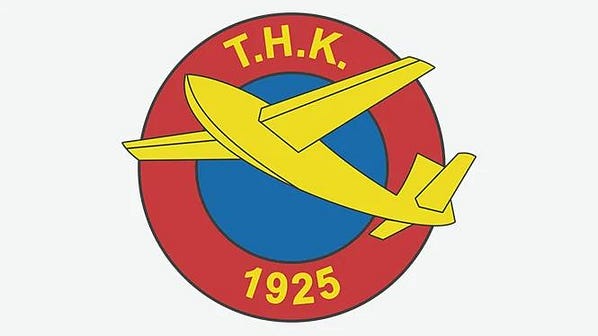
The Turkish Aeronautical Association was founded in 1925 under the directives of Mustafa Kemal Atatürk. The association aimed to lay the foundations of the Turkish aviation industry, to promote the development of military, civil and touristic aviation, to train personnel, and to direct Turkish youth towards aviation. In 1935, the association was renamed as the Turkish Aviation Association.
Vecihi Hürkuş’s Aviation Ventures


Military pilot, entrepreneur, and inventor Vecihi Hürkuş started his 53-year aviation journey as a pilot in 1916. Hürkuş, who signed many firsts in his career, flew with his own production Vecihi K-VI in 1925, but his plane was seized due to lack of permission. He flew from Istanbul to Ankara with his second plane, Vecihi K-XIV, which he produced himself. However, he could not obtain an airworthiness certificate for his plane because there was no team to perform the necessary technical inspection in the country. Therefore, Hürkuş dismantled Vecihi K-XIV and sent it to Czechoslovakia by train. After 5 months of tests, the plane finally received an airworthiness certificate and flew back from the country it went by train in 1931.
Sakir Zumre Bomb Factory

Şakir Zümre, who contributed to the National Struggle by providing weapons and ammunition, established the first private defense industry factory in the history of the Republic in the Golden Horn. Joint weapons production and repairs were carried out here for years with the İmalat-ı Harbiye factories: bombs of 100, 300, 500 and 1,000 kg for the Air Force were produced, as well as water bombs and various ammunition for the Navy. The number of workers employed in the factory reached up to 2,000.
After the Second World War, the factory, which started agricultural machinery production by ending its activities in defense industry due to military aid provided to Turkey by the USA, was closed in 1970, four years after the death of Şakir Zümre.
TOMTAŞ Aircraft Automobile Engine Turkish Joint Stock Company

After the establishment of the Turkish Aeronautical Association, it was decided to establish an aircraft factory in Kayseri and to collaborate with Germany for this purpose. Germany, which was not allowed to produce aircraft within the country according to the Versailles Treaty signed after World War I, could only continue its activities in this field abroad. As a result, in 1925, Tayyare ve Motor Türk Anonim Şirketi (TOMTAŞ) was established with a capital of 3.5 million TL in partnership with the German Junkers company and the Turkish Aeronautical Association. TOMTAŞ was headquartered in Ankara and aimed to manufacture aircraft in the Kayseri factory and establish a workshop in Eskişehir for aircraft repairs.
Kayseri Aircraft Factory

The factory, which was awarded to the German Junkers company, opened in 1926. However, due to the company’s failure to fulfill its obligations, it was closed in 1928. In 1930, it was put out to tender again on behalf of the Turkish Aeronautical Association and this time a contract was signed with the American Curtiss Aeroplane and Motor Company. From 1933 onwards, 40 HAWK III fighter planes were produced in the factory. In 1936, 20 PZL-24A-24C fighter planes were produced under license from a Polish company, and in 1940, aircraft parts of the Miles Magister type were produced under license from a British company. The factory, which managed to produce 134 aircraft in 10 years, largely lost its function at the end of this process. The name of the factory was changed to Air Supply Center in 1950 and Air Supply and Maintenance Center in 1970.
Eskisehir Aircraft Maintenance Factory

It was established to perform maintenance and repairs of aircraft. The factory, which was modernized in 1930 and expanded in 1942, later became the Eskişehir Supply Center General Directorate. Today, services such as part and module production, engine design and product development, assembly, maintenance, repair and overhaul are provided here.
Gölcük Naval Shipyard Command

After the inadequacy of the Haliç Shipyard in meeting the needs of the Turkish navy following World War I, efforts began to establish a new shipyard in the Izmit Gulf-Gölcük. The infrastructure of the military shipyard, which was established for the maintenance and repair of the Yavuz Battle Cruiser and the construction of other naval platforms, was strengthened after Turkey joined NATO.
Kırıkkale Brass Factory

The factory, which was awarded to a Swedish company in 1926, was completed in 1929 and started operating. In the factory, cartridges, casings, magazines, bullets, caps, and other brass materials were produced. To meet the needs of the civilian market, the product range was expanded, and copper wire, lead sheet, sheet metal, and block materials were also manufactured at the factory.
Kırıkkale Artillery Ammunition Factory

The factory, whose foundations were laid in 1925 and modernized by the Danish Nielsen Winther company, started production in 1929. In addition to cannonballs, the factory produced caps, primers, and fuses. After 1939, hand grenades were also added to these products. In addition to manufacturing, the factory also conducted the modernization of old-fashioned ammunition, and was modernized with American machines to produce NATO’s orders for artillery in 1953, and later with German machines for the production of ammunition orders from West Germany.
Kayas (Mamak) Capsule Factory

In 1930, a factory was established for the production of capsules and cartridges. The factory’s production capacity was increased from the 1940s onwards. The factory also produced electric fuses, railway signal cartridges, and igniters used in mines. In 1950, the factory was transferred to MKEK and renamed Kayaş Capsule and Primer Factory. Following modernization efforts by the German Nobel firm in 1957–58, the factory took on its current structure. Cobra rockets were produced in the factory in the 1970s and electric capsules were produced in 1980.
Selahattin Reşit Alan’s Aviation Ventures

Selahattin Resit Alan, one of Turkey’s first aircraft engineers, developed the prototype of an aircraft named Milli Mufreda Vekaleti (MMV-1) in 1932, which had locally-made parts except for the engine. During the test flight of MMV-1, the aircraft crashed, and Alan moved to Nuri Demirag’s company in Eskişehir where he manufactured Nu. D-36 and Nu. D-38 aircrafts. While landing at Inonu Airport for the certification flight of Nu. D-36, which was ordered by the Turkish Aeronautical Association, Alan had an accident and became a martyr.
Nuri Killigil Factories

Nuri Killigil contributed greatly to the development of the defense industry in Turkey with the factories he established in Zeytinburnu and Sütlüce. The Zeytinburnu Iron Goods Factory, which started operating in 1933, produced products such as cannons, mortars, anti-aircraft bombs, stoves, and ceramics. The metal goods factory located in Sütlüce, which Killigil purchased and transformed into a weapon factory in 1938, started production in 1939. In 1946, Killigil evacuated the factory in Zeytinburnu and continued production in Sütlüce. Here, he produced a 9mm semi-automatic pistol with a patent that he owned and was used until the 1980s. He lost his life along with 26 factory workers in an explosion of unknown cause.
Elmadağ Gunpowder and Explosives Factory

A factory named Melinit was established by a French company and operated for a while before going bankrupt. In 1934, it was transferred to the General Directorate of Military Factories. By 1939, the factory had become a large complex with a daily production capacity of 1,200 kilograms. Smokeless powder, seafaring gunpowder, dynamite, and acid used in ammunition production were manufactured in addition to sulfuric and nitric acid, battery acid, powdered detergent, and other chemicals for the civilian market. The factory continues its operations to this day.
Mamak Gas Mask Factory

Work began on producing gas masks at the chemistry laboratory founded in Mamak in 1933. Mamak Gas Mask Factory, which was built on the foundations of this laboratory, was opened in 1935. In addition to gas masks, the factory also produced channels and gas taps, hartuç beds, spare parts for fog machines, parts for flame throwers, fog hand grenades and valve covers. Furthermore, under the agreement signed with Swiss company Landis-Gyr in 1963, the factory’s product range was expanded to include electric meters, mine equipment and lighting parachutes.
Kırıkkale Steel Casting and Rolling Mill

The plant, whose construction began in 1929 by the German Gutehoffnungshütte-Demag company, was taken over in 1936. The facility, which produced steel blocks, plates, profiles, and nails at full capacity, also manufactured products such as scissors, plates, shafts, dozer and grader blades, wagon and locomotive bands, spiral springs, boilers, and heat pipes for the civilian market.
Nuri Demirağ Aircraft Factory

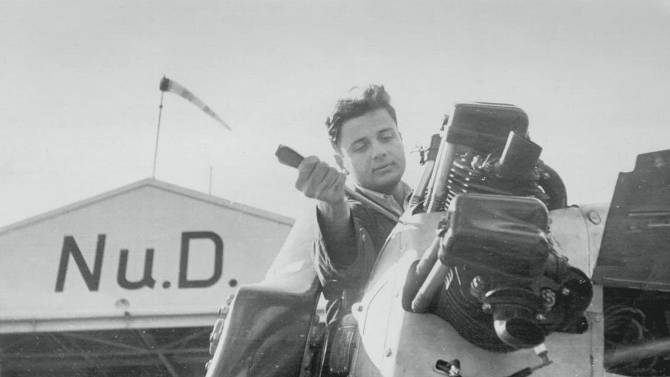

Nuri Demirağ, who achieved many firsts in Turkey, founded the country’s first mass-production aircraft factory in Beşiktaş in 1936 and donated most of his fortune to it. The plans for the aircraft and gliders produced in the factory were drawn by Turkey’s first aircraft engineer and inventor, Selahattin Reşit Alan. In the year the factory was established, the first single-engine aircraft, Nu. D-36, was produced, and two years later, in 1938, the double-engine, six-passenger capacity Nu. D-38 was manufactured. The Nu. D-38 model, which was produced in mass, was classified as a “Class A passenger aircraft” by the World Aviation Authority in 1944. This plane, which could reach speeds of 325 km/h, could cover a distance of 1,000 km. Aircraft orders were placed with the factory from the Turkish Aeronautical Association and various European countries starting in 1938.
Kırıkkale Rifle Factory
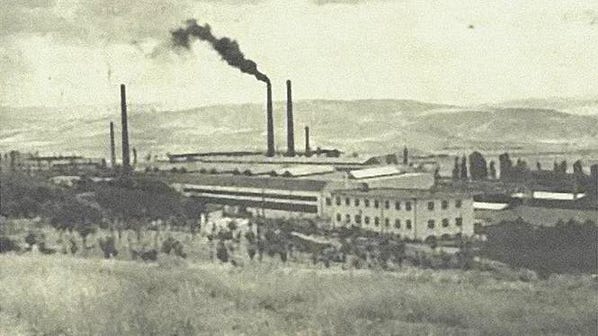
Established in 1936 due to the insufficient production of Ankara Rifle Factory in meeting the needs of the army, it started production in 1939.
Until the end of World War II, rifles were produced in the factory, and from 1950 to 1967, pistols and hunting shotguns were produced. After 1967, with the approval of the German government, the factory started manufacturing G-3 automatic infantry rifles and MG-3 machine guns.
Ata Nutku and GÖLCÜK Ship

Deniz Captain Ata Nutku, born in Preveze and coming from a family of three generations of sailors, designed and built the first large-scale and steel-hulled oil (fuel) tanker in the history of the Republic of Turkey, named GÖLCÜK, using local and national resources.
Kırıkkale Nitrocellulose Powder Factory

An agreement was made with the German company Köln-Rottweil in 1936 for the establishment of the factory, and it was taken over in 1938. Today, the factory, which is called Kırıkkale Gunpowder Factory, has a daily production capacity of around 1,400 kg of gunpowder to meet the military’s ammunition needs. In addition, materials such as hunting gunpowder, ether, and paint are also produced to meet the needs of the civilian market.
YILDIRAY and ATILAY Submarines

Assembly of two out of four Ay class submarines ordered from the Germaniawerft company by Turkish Navy, named YILDIRAY and ATILAY, has been completed at the Taşkızak Shipyard and the submarines have been launched into the sea.
Kirikkale Ammunition Factory

The plant, which was modernized with a tender given to a German company in 1937, was delivered in 1939. Although production could not start immediately due to the outbreak of World War II, the difficulties were eventually overcome thanks to the efforts of Turkish engineers and workers. As a result, the production of cannons and their parts began at the factory, which mainly produced anti-tank guns, and the factory’s annual production reached the desired level. After 1950, as sufficient orders could not be obtained, the factory turned to part manufacturing and repair, and today it produces howitzer guns, machine tools, ship and automotive parts, and some railway parts.
Battery Factory

Production of batteries for submarines has started at the battery production facility located in the Gölcük Naval Shipyard Command.
Etimesgut Aircraft Factory

Established by the Turkish Aeronautical Association in 1941, the factory also employed technicians from Poland, which was under German occupation. The factory produced a total of 120 single-engine Miles Magister training planes, acrobatic training planes, ambulances and tourism planes, advanced training gliders, and light transport planes. Maintenance of numerous other planes was also carried out at the factory. In addition, the THK-5 Ambulance Plane produced at the factory was exported to Denmark in 1950. The factory, which was transferred to MKEK in 1951, became non-functional following the military aid provided by the United States in the post-World War II period and was converted into a tractor factory in 1963.
TCG BORA and TCG YILDIRIM

The second generation Turkish-type attack boats belonging to the Navy were built by repairing the motors removed from Turkish Bird planes in Taşkızak and Gölcük Shipyards between 1941–1944 and put into service.
Orman Çiftliği Aircraft Engine Factory

The Orman Çiftliği Aircraft Engine Factory was established by the Turkish Aeronautical Association in 1948 to produce engines for Miles Magister planes. It was the first aircraft engine factory in Turkey, and under a license obtained from England, 200 Gipsy Major engine parts were produced. The factory was transferred to MKEK in 1952 and renamed the Turkish Tractor Factory in 1954, where it continued production activities in another sector.
Ankara Wind Tunnel

The wind tunnel project, which was initiated in 1941 following the example of Swiss technology, is an important endeavor where the interaction of objects with air flow is tested and their aerodynamic structures are examined. The necessary equipment for implementing this project was obtained from England and the construction was completed in 1950. The Ankara Wind Tunnel, which operates at low subsonic speeds, has a closed circuit, horizontal loop, atmospheric and closed test chamber, and numerous tests have been conducted for military and civilian areas. The maintenance of the tunnel has been carried out by TÜBİTAK since 1993.
Machine and Chemical Industry Corporation (MKEK)

The Machinery and Chemical Industry Corporation (MKEK) was established in 1950 to meet the production needs of Turkish law enforcement agencies through the restructuring of production facilities. In a short period of time, MKEK increased its production capacity and began manufacturing and exporting aircraft. Additionally, it produced iron-steel and sheet products for the civilian market. Today, operating as a public company, MKEK produces weapons, ammunition, rockets, explosive materials, and military vehicles and equipment to meet the needs of the Turkish Armed Forces.
General Directorate of Machinery and Chemical Industry Corporation

After the 1940s, there was a need for administrative restructuring due to the significant loss of function of the production centers within the Military Factories General Directorate. As a result, military manufacturing units began to operate under the umbrella of the MKEK General Directorate, established in 1950.
Entry to NATO and Military Aid

Increased military aid following Turkey’s inclusion in NATO after World War II disrupted the defense industry initiatives that had started in the early years of the Republic. However, the 1963 and 1967 Cyprus crises and the 1974 Cyprus Peace Operation led to the realization of the importance of a national defense industry due to the implementation of arms holding. As a result, the Foundation for Strengthening the Land, Sea and Air Forces was established in Turkey after 1974 to develop the defense industry infrastructure. Starting in 1985, initiatives based on foreign partnerships and mobilizing the private sector in addition to government institutions were accelerated.
National Defense Ministry Research and Development Department

The efforts for the development of all kinds of equipment and weapons needed by the Turkish Armed Forces gained momentum with the establishment of the R&D Department under the Ministry of National Defense in 1954.
Huglu Hunting Shotguns Cooperative

The cooperative, which started production at the workshop level in 1962, currently continues to manufacture hunting rifles at its production center in Konya Huğlu, which started operating in 1990.
TÜBİTAK

The institution was established in 1963 to support basic and applied academic research in natural sciences and to encourage young researchers. Initially named as the Scientific and Technological Research Council of Turkey, TÜBİTAK’s name was changed to the Scientific and Technological Research Council of Turkey with the law that came into effect in 2005. With the same law, social and humanities sciences were also included in the institution’s field of responsibility.
TCG KOÇHİSAR

The first warship built at the Gölcük Naval Shipyard, TCG KOÇHİSAR (P-116), was launched.
LCM8 and LCVP

The mechanized landing and personnel landing vehicles, which were built with local resources in Gölcük and Taşkızak Shipyards in 1968 for the purpose of increasing the overseas power projection capability of the Turkish Naval Forces, are equipped with the ability to land mechanical equipment, personnel and ammunition from sea to land. These vehicles were used in the amphibious operation carried out at Girne Yavuz Beach during the Cyprus Peace Operation.
First Battleship

The first large warship built with local resources, the 1,950 ton TCG BERK (D-358), was put into service at the Gölcük Naval Shipyard.
Turkish Aerospace Industries Inc.

Turkish Aerospace Industries Inc. (TAI) was established within the Ministry of Industry and Technology of Turkey with the aim of reducing Turkey’s dependency on foreign sources in defense industry.
Cyprus Peace Operation and Localization in Defense Industry

On July 20, 1974, the Cyprus Peace Operation was launched in accordance with the decision made by the Bülent Ecevit and Necmettin Erbakan government to secure the presence of the Turkish Cypriot people on the island. The arms embargo imposed on Turkey after the operation once again highlighted the importance of a national defense industry. From this period onwards, Turkey increased its efforts to reduce external dependency and localize its defense industry.
Prof. Dr. Necmettin Erbakan

Prof. Dr. Necmettin Erbakan, the 23rd Prime Minister of the Republic of Turkey, conducted valuable work particularly during his term in government after the Cyprus Peace Operation to establish a domestic and national defense industry and made a significant contribution to the development of the Turkish defense industry.
Gölcük Naval Shipyard R&D Unit

The first R&D unit within the Navy Command was established at the Gölcük Naval Shipyard Command.
ASELSAN
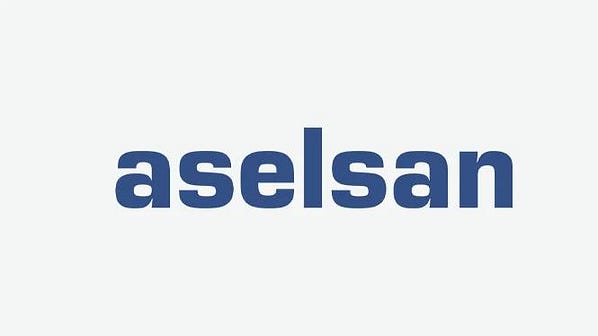
Established to meet the communication device needs of the Turkish Armed Forces with national resources, today it continues its activities in the fields of communication, information and defense system technologies, microelectronics, guidance, electro-optics, radar and electronic warfare systems, as well as transportation, security, energy, automation and health activities within the TSKGV.
ISBIR Electric Industry Inc.

Established in 1977 by Turkish workers working abroad, the company started production in 1981. The company initially produced diesel generator sets and later started producing original alternators with a Hitzinger license. Today, İŞBİR produces diesel generator sets, synchronous and asynchronous alternators, dynamic frequency converters, mobile dual generator sets, and marine generators and continues its activities under TSKGV.
TCG YILDIRAY (S-350)

The Ay class (Type 209) submarine, built at the Gölcük Naval Shipyard and named TCG YILDIRAY (S-350) in the Turkish Navy, has entered service.
ASPILSAN

Established in 1981 with the donations of people from Kayseri to produce rechargeable nickel-cadmium batteries for the current communication tools of TSK, ASPİLSAN’s factory was opened in 1984. Currently operating under TSKGV, ASPİLSAN produces advanced technology batteries for civilian and military handheld/shoulder radios, combat equipment, aircrafts, and helicopters in addition to batteries, chargers, and energy storage systems.
HAVELSAN

Established in 1982 as a foreign joint venture to produce, maintain, and repair the avionic systems used by the Air Force Command, HAVELSAN gained full national identity in 1984. HAVELSAN, operating under the TSKGV, offers high-tech software-intensive solutions and products in the fields of command and control, defense, education and simulation, information and communication, national security, and cyber security.
Turgut Özal

Turgut Özal, the 8th President of the Republic of Turkey, made valuable contributions to the development of the national defense industry, particularly emphasizing research and development and production activities during his tenure as Prime Minister. As a result of the Özal government’s policy of collaboration with the private sector in the defense industry, companies such as TUSAŞ, FNSS, ROCKETSAN, and TEI were established. Additionally, SAGEB, SSM, and TSKGV were also founded during this period.
TAI
(TAI stands for Turkish Aerospace Industries)

The establishment of TUSAŞ Aerospace Industries Inc. (TAI) was carried out in line with the decision to meet the Turkish Air Force’s fighter aircraft needs through the production of F-16s. The company’s main goal is to produce F-16s, integrate systems on the aircraft, and conduct flight tests. It was established for 25 years as a Turkish-US joint investment company by TUSAŞ.
Modern Defense Industry After the Establishment of SSM


After the 1974 Cyprus Peace Operation, it became necessary to establish a domestic defense industry due to the arms embargo imposed on Turkey. Although attempts towards this goal increased after the operation, developments in the domestic defense industry primarily gained momentum in the mid-1980s. With the establishment of SAGEB in 1985 and its restructuring as SSM in 1989, these efforts began to yield results from the 1990s onwards. During these years, the development of the Turkish defense industry gained significant momentum, and a significant portion of the TSK’s needs were met with local and national resources.
TUSAŞ Engine Industries Inc. (TEI)
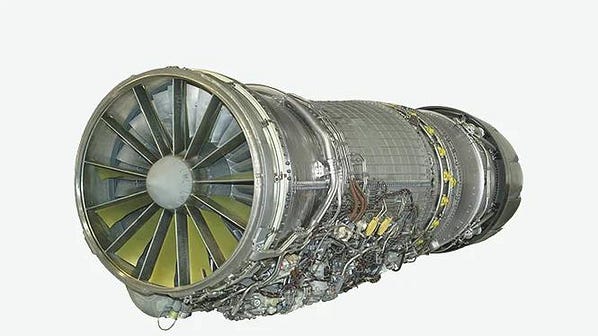
Established in Eskişehir with the partnership of an American company under the F-16 project, TEI is a company aimed at obtaining the necessary technological accumulation to create a modern engine industry in Turkey. Today, as a subsidiary of the TSKGV, TEI operates in the research and development, design, production, maintenance, modification, and modernization of aircraft engines and other gas turbine engines.
SAGEB
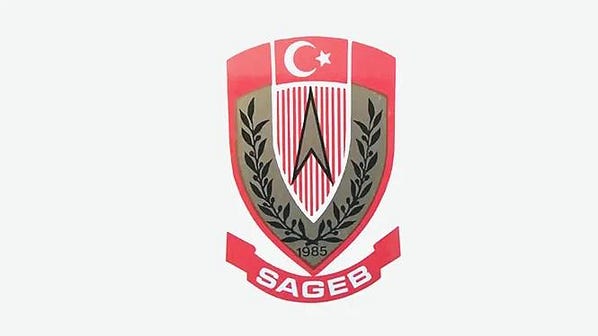
In 1985, the Defense Industry Development and Support Administration (SAGEB) was established with the aim of developing and modernizing the defense industry and making the sector more efficient. SAGEB, which has a flexible structure, prioritizes maximizing the use of domestic industrial infrastructure, directing new investments towards advanced technology, and encouraging these investments. The increasing pace of technological developments in the years when SAGEB was established required the institutional structure to be transformed into a Ministry.
Turkish Armed Forces Strengthening Foundation (TSKGV)

TSKGV was established in 1987 by the merger of the Army, Navy and Air Forces Strengthening Foundations previously established on various dates.
Delivery of 160 F-16s

Within the scope of the Preliminary Project 1, a total of 160 F-16 aircraft were produced, with 8 in the United States and 152 in Turkey, and delivered to the Turkish Air Force.
Within the framework of the project, Turkey mainly carried out the manufacturing of the rear fuselage, mid fuselage, and wings of the F-16 aircraft, as well as the complete assembly and installation of the engine.
ROKETSAN

In Turkey, ROKETSAN was established to be a pioneer in the design, development, and production of rockets and missiles, as well as to meet the needs of the Turkish Armed Forces. ROKETSAN, operating under TSKGV, produces land, air defense, and naval systems, precision-guided systems, space projects, ballistic protection systems, and subsystems.
TCG FATIH (F-242)

The Yavuz class (MEKO 200), the first modern frigate class of the Turkish Navy consisting of four frigates with a total weight of 2,783 tons, built in the Gölcük Naval Shipyard, has been commissioned with the name TCG FATIH (F-242). TCG FATIH, one of the four ships planned to be acquired as part of the modernization of the Turkish Navy, is the first ship of its class to be produced in Turkey.
Undersecretariat for Defense Industries (SSM)

The Defense Industry Development and Support Administration (SAGEB) was restructured as the Defense Industry Undersecretariat (SSM) in 1989 with the aim of developing a modern defense industry and ensuring the modernization of the Turkish Armed Forces.
Joint Production Method

The supply process has been put into operation through the joint production method. In this context, projects such as Armored Combat Vehicle, Light Transport Aircraft, Initial Training Aircraft and COUGAR Helicopter have been realized.
HAVELSAN Technology Radar Industry and Trade Inc.

Established in 1990 as a Turkish-French joint venture with the aim of producing long-range mobile air search radars in Turkey. In 2001, it became a national organization with the transfer of shares of the French company to HAVELSAN A.S. Today, it continues its activities in electronic systems, network-supported security systems, system/subsystem, and R&D fields.
SASAD

The Defense Industry Manufacturers Association was established in Ankara in 1990 with the proposal and support of the Ministry of National Defense. The association, which was renamed as the Defense and Aerospace Industry Manufacturers Association (SASAD) in 2012, has been operating in the civil aviation and space fields since then.
Armored Combat Vehicle (ACV)

Within the framework of the Armored Combat Vehicle (ACV) Project initiated to meet the armored combat vehicle needs of the Turkish Land Forces, 1,698 ACVs, which have high mobility and protection capabilities in all types of terrain, have been produced.
Defense Technologies Engineering and Trade Inc. (STM)

It was established to provide engineering, technology, and consultancy services to the Turkish defense industry. The company currently operates in military naval platforms, tactical mini UAV systems, cyber security and information technologies, satellite-space technologies, command control systems, and consultancy areas.
SF260 Training Aircraft
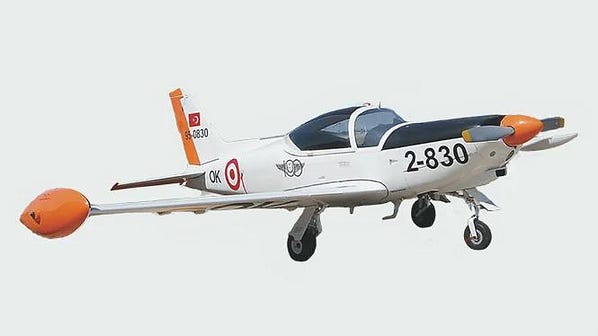
The first 6 planes were manufactured in Italy and brought to Turkey in 1991. The remaining 36 planes were produced by Turkey. All of these planes were deployed at the 123rd Basic Training Squadron located in Izmir Çiğli. The entire fleet is under the command of the Fleet, which includes all the warships and planes together.
TCG PREVEZE Type 209 T1 Submarine

The first submarine of the Preveze class, built at the Gölcük Naval Shipyard and produced in the Type 209/T1.1400 class used by the German Navy, TCG PREVEZE (S-353), has entered service. Named after the Battle of Preveza, the submarine continues to serve in the Turkish Navy.
KALYON-5 National War Management System
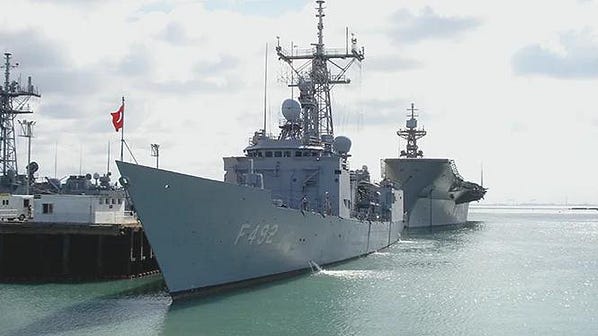
Turkey’s first National War Management System (SYS), KALYON-5, has been completed. Based on KALYON-5, the Ship Integrated Combat Management System (GENESIS) Modernization Project (G-GSMP) has been implemented and the system has been successfully integrated into TCG GEMLIK (F-492) frigate.
TCG Lieutenant Colonel Kudret Güngör (A-595)

The fuel tanker named TCG YARBAY KUDRET GÜNGÖR (A-595), produced under the first sea platform project of the Undersecretariat for Defense Industries, is the first vessel built in a Turkish shipyard exclusively for the Turkish navy. The ship, which performs open sea supply missions, can carry 9,980 tons of fuel, 2,700 tons of water, 80 tons of oil, and 500 cubic meters of material on a 14,000-ton displacement platform.
Delivery of 80 F-16s

Within the framework of the Öncel 2 Project, which is a continuation of the Öncel 1 Project, 80 F-16 aircraft were delivered to the Turkish Air Force.
SAKARYA T-122 Multi-Purpose and Multi-Barrel Rocket Launcher System

The SAKARYA T-122 ÇNRA System, which was designed in 1990 and had its first prototype produced in 1995, entered into service. The system provides intensive and effective fire support to high-priority targets for maneuver units in all weather and terrain conditions, day and night.
J-600 T YILDIRIM Tactical Ballistic Missile

The J-600 T YILDIRIM, which enhances TSK’s long-range attack capability, has been developed. The missile provides high destructive power against high-priority targets and can be launched from the Yıldırım Weapon System and other launch platforms with suitable interfaces for integration.
COUGAR AS 532 General Purpose Helicopter

Production has started for the COUGAR AS 532 helicopter, which is planned to be jointly produced within the scope of the agreement between Turkey and France and a total of 30 units are planned to be produced. The first delivery took place in the year 2000.
2000
TASMUS Tactical Field Communication System

TASMUS, a network-based communication infrastructure that allows real-time acquisition of a common picture of the battlefield and data sharing among warfare systems, has been put into service by the Turkish Armed Forces (TSK).
2001
TURNA Target Aircraft System

TURNA was launched in 1995 as an R&D project to meet the training needs of the Turkish Armed Forces’ air defense units. TURNA has superior features such as simulating enemy aircraft and missiles, high maneuverability, high speed, and low mission risk. It has an open architecture that can be shaped according to different needs and is still actively used today.
2002
F-35 Joint Strike Fighter

Turkey has joined the consortium created for the production of F-35, which has low visibility, advanced sensor and radar systems and in which various countries participate in the production process at different levels.
2003
MRTP 15 Military Boat

Two MRTP 15s were exported to Pakistan Special Forces. This was Turkey’s first military boat export. As of 2021, more than 130 different naval platforms have been exported to various countries.
AIRBUS A400M ATLAS Military Transport Aircraft

Turkey has joined the international Next Generation Transport Aircraft Supply Project to meet its long-range air transportation needs. With the delivery of the last aircraft in 2022, Turkey’s fleet of 10 A400M aircraft is complete. A400M aircraft, in which Turkey also played a role in the design and production processes, can carry various vehicles such as helicopters, rescue boats, as well as a large number of personnel in a single trip.
2004
FIRTINA Armored Motorized Bus

FIRTINA, equipped with effective communication, firing power, and positioning capability, that can be used in any terrain, has entered into the inventory of the Turkish Armed Forces. With its high firing precision and advanced firing control system, FIRTINA significantly increases the firing power of the Turkish artillery by being able to fire any type of ammunition in NATO standards.
ATILGAN and ZIPKIN Stinger Systems with Mountable Bases


The first deliveries of computer-assisted low-altitude air defense systems ATILGAN and ZIPKIN, which are equipped with various sensors and a mechanism with propulsion engines and external geometry to reduce air friction, launched from a weapon system and whose orbit can be updated according to the target during flight, were made. ATILGAN was developed to protect armored units on the move, while ZIPKIN was developed for the protection of fixed facilities and military units. These systems can automatically direct missiles to the target, track the target, and fire at the target in all weather conditions, day and night.
2005
Turkish Aerospace Industries, Inc. (TAI)

As part of the restructuring of TAI, where foreign shares were purchased by Turkish shareholders, TAI and TUSAŞ merged under the umbrella of TUSAŞ Turkish Aerospace Industries Inc. to expand their operations. TUSAŞ Turkish Aerospace Industries Inc. quickly became Turkey’s technology center in the development, modernization, production, system integration, and life cycle support processes of aviation and space industry systems.
GENESIS War Management System Development Project

The project that extends the service life and increases the combat capabilities of eight G-class frigates has been completed. GENESIS enables the full automation of reconnaissance, surveillance, detection, tracking, and classification operations in operational environments and provides support for surface warfare, submarine defense, air defense, and electronic warfare missions. The system is preferred in all kinds of ship modernization and new shipbuilding projects due to its adaptability to different platforms. G-class is the name of the Oliver Hazard Perry class frigates in the Turkish Navy.
2007
BAYRAKTAR National Mini Unmanned Aerial Vehicle

Turkey’s first mini robotic aerial vehicle, developed and produced for use in short-range reconnaissance and surveillance applications, has entered into service. The BAYRAKTAR MINI UAV, with a completely national and original design, is resistant to challenging meteorological and geographical conditions, and has become the first national UAV to enter inventory and the first aerial vehicle to be exported.
STAMP Remote Controlled Stabilized Machine Gun System
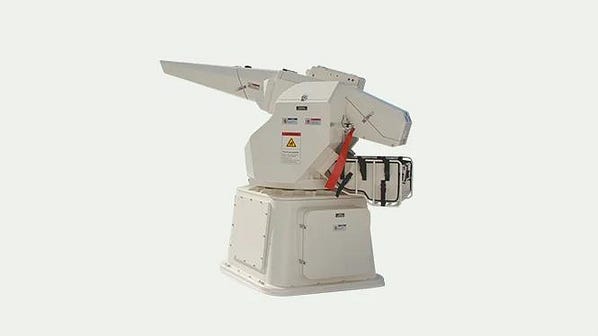
STAMP was developed to detect, recognize, track, and target objects that are invisible to the naked eye in night and negative viewing conditions. The system has the ability for remote control, automatic target detection and tracking, automatic ballistic application, high accuracy of hitting, easy installation on sea vehicles, and provides effective protection against asymmetric threats.
2008
KMS Stinger Mounted on the Pedestal

Stinger missiles, which have been equipped with electro-optical systems by Turkey to increase their effectiveness, have been exported to the Netherlands. This export to a European and NATO country is important in demonstrating the technological level reached by the Turkish defense industry.
KALKAN Air Defense Radar

An original radar has been produced for the detection and tracking of warplanes, helicopters, unmanned aerial vehicles, and cruise missiles, which can be used alone or in conjunction with command and control systems for protecting critical areas such as bases, ports, factories, and more under the KALKAN program.
2009
KUNDUZ Amphibious Armored Engineering Vehicle

KUNDUZ, the first bulldozer in the world with swimming ability, developed by Turkish engineers, has entered the inventory of the Turkish Armed Forces. KUNDUZ, which can perform scraping, leveling, transportation, and excavation operations, can expand its operational capacity by increasing its weight when necessary.
KIRPI Mine-Protected Vehicle

Production of KIRPI, a vehicle that is completely local and national from design to production, has started. Designed for the safe transportation of soldiers, KIRPI gained great admiration in the international arena with its superior level of protection and became associated with the Turkish military. Today, the vehicle offers special solutions for various needs with its different versions that have different features and equipment.
MALAZGİRT Mini Unmanned Helicopter
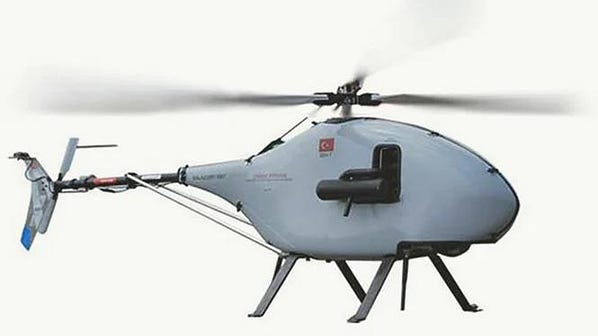
MALAZGİRT, which has been developed entirely domestically with its electronic hardware, software, design, and manufacturing, and is capable of making point landings and take-offs in difficult conditions while transferring high-quality sound and image, has been released for use.
2010
UMTAS Long Range Anti-Tank Missile System

The long-range anti-tank missile system UMTAS, developed for use in attack helicopters, has been put into service. The system, equipped with high technology, can operate in all weather conditions, day and night, thanks to its infrared imaging seeker. The precision guidance and armor-piercing tandem warhead make UMTAS an effective weapon system against armored targets.
2011
MİLGEM National Ship Project

In 1993, the Turkish Naval Forces Command initiated the first headquarters work for the national design and construction of a military vessel in the corvette class for the first time in Turkey. The project, which was decided to begin in 2000, established a project office in 2004 to carry out design activities. The first ship designed and built, TCG HEYBELİADA, was delivered in 2011, followed by the second ship, TCG BÜYÜKADA, in 2013, the third ship, TCG BURGAZADA, in 2018, and the fourth ship, TCG KINALIADA, in 2019. The fifth ship, the ISTANBUL FRIGATE, was launched in 2021.
SAMUR Mobile Swimmer Assault Bridge

The SAMUR bridge and transport system, which enables fast and safe crossing over rivers and streams, has been developed. SAMUR, which is the first original design and development project of the Turkish defense industry, is designed for the transportation of all kinds of military cargo, especially main battle tanks, to the opposite shore. The system, which can also be used in natural disasters such as floods, allows the establishment of a dual transport team in up to 10 minutes, and with 12 SAMUR systems combined, a bridge of 150 meters in length can be obtained.
RASAT National Earth Observation Satellite

The first Earth observation satellite designed and produced in Turkey and the country’s second remote sensing satellite, RASAT, was launched into space. With its high-resolution optical imaging system, the images obtained from RASAT are used in cartography, disaster monitoring, smart agriculture, environment, urban planning and development studies. After spending 11 years in orbit, RASAT completed its mission in 2022.
2012
ŞİMŞEK Target Aircraft System

ŞİMŞEK, a high-speed target aircraft system with similar flight characteristics to combat aircraft and missiles, was designed in 2009 as an R&D project to meet the training needs of the TSK’s air defense units. It was designed to be used in training for firing with various missile systems and tracking with radar, which can detect the location and distance of objects by picking up the echoes of radio waves, using a mechanism with propulsion-producing engines and a geometry that reduces air friction. Additionally, efforts are underway to convert ŞİMŞEK into a cruise missile with a jet engine propulsion system that can be used against land and sea targets and has the ability to fly straight at a fixed speed.
ACAR Surveillance Radar

A new generation radar that can detect, track, and classify mini/micro unmanned aerial vehicles entering the line of sight with targets moving on land and sea surfaces or flying at low altitudes even under challenging conditions, and can also perform precise artillery firing sequences, is now ready for mass production while preserving HTML tags.
GÖKTÜRK-2 High-Resolution Earth Observation Satellite

The launch operation of Turkey’s first high-resolution Earth observation satellite, developed locally, has been carried out. The GÖKTÜRK-2 project aims to develop technology, human resources and infrastructure for space and satellite systems, and to meet the observation and research needs of public institutions and organizations with national capabilities. All activities in the design, production and testing processes were carried out by Turkish engineers.
SERDAR Coastal Surveillance Radar

SERDAR, developed to detect and track sea targets and low altitude aerial targets, has been put into service. Thanks to its low probability of detection (LPI), SERDAR enables effective intervention against threats approaching critical coastal areas and can be mounted on a fixed land platform and operated through a remote command center.
DSH Submarine Defense War Rocket and Shooter System

For use against underwater targets from surface platforms, Submarine Defense Warfare Rockets and Firing System were developed. DSH, which can be used in the range of 500–2,000 meters and the depth range of 15–300 meters, can work in integration with the surface platform’s weapon management system and sonar, and has the ability to automatically direct and fire at targets either singularly or in salvo. Thanks to its adjustable fuse feature, the system makes it possible for rockets to explode at the desired depth.
SOM National Cruise Missile

Delivery of missiles aimed at the destruction of fixed land targets and moving sea targets with effective protection has commenced. SOM, which can perform its duties in all weather conditions, has features such as autonomous use, long range, low radar signature, low visibility, high precision, and resistance to countermeasures. SOM is equipped with a mechanism that has engines that produce thrust and external geometry that reduces air friction, and its trajectory can be updated according to the target during flight.
LCT Fast Tank Landing Ship

Amphibious operation, the 8th and final LCT ship built for humanitarian aid missions in disaster areas, personnel and material transfer, was delivered to the Naval Forces Command. LCT platforms equipped with two remote-controlled 25 mm guns and two 12.7 mm machine guns have the capability to transport 400 tons of cargo or 260 marines.
2013
Teknopark Istanbul

The technology development zone, Teknopark Istanbul, was established with the aim of creating the necessary dynamic, scientific, and technological infrastructure to meet Turkey’s advanced technological needs with national resources and has started its operations. High-tech development studies, primarily in defense industry, as well as aviation/space, maritime, advanced electronics, energy, health sciences, and industrial software sectors, are being conducted in Teknopark Istanbul.
HÜRKUŞ Turkish Basic and Primary Training Aircraft

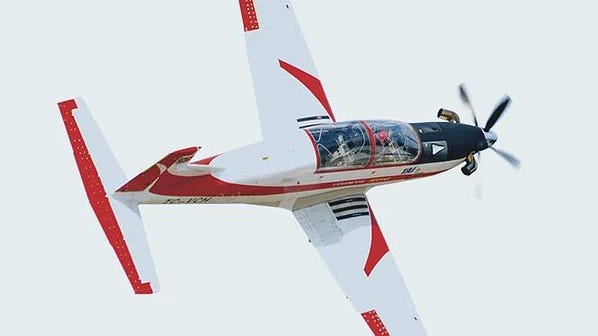

HÜRKUŞ, the first Turkish aircraft developed and produced with local resources to meet Turkey’s training aircraft needs and certified by the European Aviation Safety Agency, has successfully completed its first flight. HÜRKUŞ can be used at all levels of training, from basic to fighter aircraft, and is also designed for reconnaissance, surveillance, escort duties, and providing close air support for the destruction of enemy targets from the air to support ground operations.
NEB Penetrating Bomb

NEB, the first concrete drill munition developed with local resources in Turkey, was exhibited at the 11th International Defense Industry Fair (IDEF). NEB, which is in the inventory of the Turkish Armed Forces, is effective against buried hard targets such as ammunition depots, underground petrochemical depots, shelters, command and control centers, surface targets such as airports, dams, and bridges, and area targets such as radar antennas, stationary missile batteries, and industrial facilities.
POYRAZ Ammunition Loading Vehicle
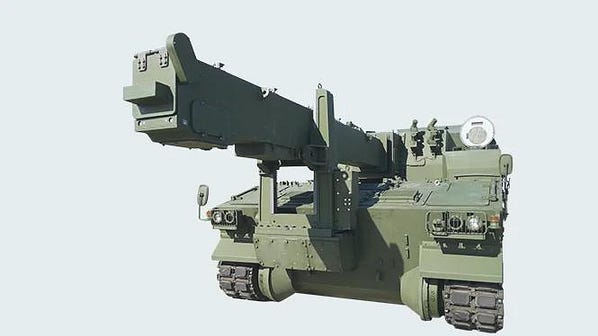
The first prototype of POYRAZ, developed to provide ammunition supply support to the storm howitzer, which is a medium-range, short-barreled cannon that can shoot from high and low positions, was produced and put into mass production. Thanks to its Ammunition Transfer System, POYRAZ can perform efficient and fast ammunition loading in all kinds of weather, terrain, and day-night conditions.
MILITARY TELEGRAPH LINE MODEM-MULTI CHANNEL (SWITCH)
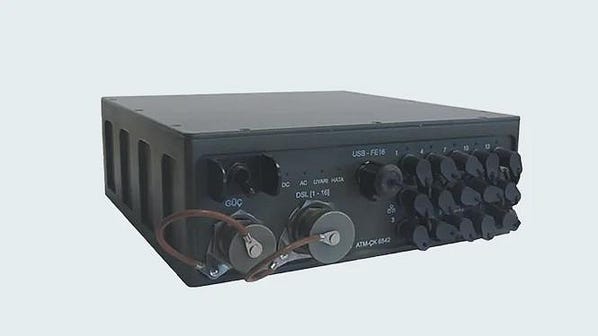
The MILITARY WIRED LINE MODEM, which enables data communication between military units in situations where wireless systems cannot be used and under challenging environmental conditions, was produced entirely with domestic resources in 2012 and entered the inventory in 2013. The product is also known as G.SHDSL Modem.
2014
F-16 SIMULATOR


The F-16 Simulator, which is used for the training of pilots within the Air Force Command and for experiencing all missions, including air-to-air and air-to-ground operations, has been put into service. The simulator, which has 360-degree viewing capability, simultaneous multi-user support, and inter-user communication ability, offers a safe and cost-effective solution.
EJDER YALÇIN Armored Combat Vehicle

EJDER YALÇIN, developed to meet the operational needs in any terrain and region, has entered into service. With its high protection and mobility capabilities, EJDER YALÇIN can be customized for different applications thanks to its high payload carrying capacity and unique vehicle control software.
T129 ATAK Attack and Tactical Reconnaissance Helicopter

The first domestically developed ATAK Helicopter, which was developed using national capabilities to meet the Turkish Armed Forces’ attack helicopter needs, has been delivered. Designed to be suitable for high temperature and high altitude missions, ATAK has the capability to operate in challenging climates and geographies. ATAK is currently being used by the Turkish Land Forces Command, Gendarmerie General Command, and General Directorate of Security.
BAYRAKTAR TB2 Tactical UAV/UAS System

The first delivery of BAYRAKTAR TB2, designed by Baykar Defense as a system that offers all solutions together, has been completed. BAYRAKTAR TB2, which can perform reconnaissance, surveillance, intelligence and destruction missions, can make precise targeting thanks to its laser marker and can successfully fire its national smart ammunition it carries to the target. Currently used by the Turkish Armed Forces, Gendarmerie General Command, and General Directorate of Security, BAYRAKTAR TB2 is a medium altitude-long endurance class of (MALE) unmanned aerial vehicle with full autonomous taxi, takeoff-landing and normal cruising capabilities.
2015
New Type Police Station Boat (YTKB)


The YTKB production project, aimed at exploration and surveillance, intelligence gathering, base and port security, and coastal and naval defense purposes, has been completed with the delivery of 16 boats named “Tuzla Class Patrol Boat”, which are part of the inventory of the Naval Forces Command.
ZOKA Acoustic Dashboard Countermeasures

ZOKA, developed and produced with national resources to effectively protect submarines against torpedo threats, has entered into service. ZOKA, which has features that can effectively counter all torpedo threats, can be used on platforms both above and below water.
SAHA Istanbul

The Defense, Aviation, and Aerospace Cluster (SAHA Istanbul) was established to bring together industrial companies operating in the North Marmara corridor with the aim of increasing the national production capability and capacity of the Turkish defense, aviation, and space sector.
HAB Ankara Space and Aviation Specialized Organized Industrial Zone

The establishment works of HAB have started in line with the goal of supporting domestic industry in space and aviation fields and making high value-added production and exports.
Ay Class Submarine Modernization
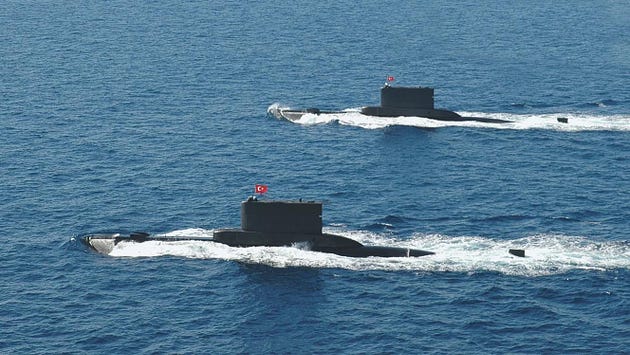
The modernization of the Ay class submarines belonging to the Turkish Naval Forces, TCG DOĞANAY (S-351) and TCG DOLUNAY (S-352), have been completed. The modernization includes Electronic Support, Attack and Cruise Periscopes, and Inertial Navigation Systems.
2016
KORKUT Motorized Barrel Low Altitude Air Defense Weapon System

The first delivery of KORKUT, Turkey’s first national air defense weapon system developed for the effective implementation of the air defense of mechanized units equipped with combat and transportation equipment, was made.
MAM-C and MAM-L Mini Smart Munitions

Thanks to their lightweight and small structures, Mini Smart Munitions, which are effective against moving targets with their high strike precision and can be used in all air platforms with low payload capacity, including UAVs, have been put into service.
ASELPOD Advanced Targeting Pod

The ASELPOD, a multi-sensor targeting pod designed uniquely and domestically for use in combat aircraft, has been produced and entered the inventory of the Air Force Command. The thermal camera in ASELPOD, which has three different viewing angles — narrow, wide, and super-wide, enhances navigation ability and provides more information about the general structure of the area being examined.
GÖKTÜRK-1 High-Resolution Earth Observation Satellite

GÖKTÜRK-1, capable of obtaining high-resolution imagery for military intelligence purposes from anywhere in the world, has been successfully launched into space. In addition to meeting military needs, the satellite can also be used in civilian applications.
MPT-76 National Infantry Rifle

The MPT-76, developed entirely from national resources, has successfully passed all 42 tests conducted in challenging environments such as cold, hot, sand, rain, and mud. It can fire 7.62×51 mm NATO ammunition and make effective shots up to 600 meters. The production of MPT-76 has started.
AGOSTA 90B Submarine Modernization Project

STM has started the modernization of AGOSTA 90B submarines belonging to Pakistan, which is the first engineering export in the submarine field for Turkey. While the first submarine, PNS/M HAMZA (S-139), has been delivered, the modernization of the other two submarines is ongoing.
2017
Integration of SSM with the Presidency

The Undersecretariat for Defense Industries was attached to the Presidency with the regulation made on December 24, 2017.
ROBOIK Unmanned and Autonomous Vehicle Design, Development and Prototype Competitions

The Undersecretariat for Defense Industries has organized the first “Unmanned and Autonomous Land Vehicle Design Competition” under the call to “realize the autonomous vehicles of the future that can operate with little or no human intervention, and strengthen our defense industry”.
ATMACA Ship Killer Missile

The first domestically developed sea missile of Turkey, ATMACA, with guidance technology, successfully completed its first test shots. The missile can be used in assault boats, frigates, and corvettes. The serial production of the missile began in 2020. ATMACA can be effective against both moving and stationary targets in all weather conditions.
METE Özgün, Domestic Pistol Project

In line with the goal of meeting the ammunition needs of security forces through domestic production, the METE: Original, Domestic Pistol Project was launched. Within the scope of this project, TP9 SFx and SAR9 METE, which are lightweight and effective pistols with needle firing and single action trigger mechanism, were selected as “Pistol of the Year” at the Industry Choice Awards held in the USA.
ALPER Ship LPI Radar System

ALPER, which can detect any target moving on the surface of the sea and has the feature of being undetectable, has been put into service. Developed to be used as a radar on military ships in combat environments, ALPER can be integrated into any sea platform.
MOSHIP Submarine Rescue Main Ship

The delivery of MOSHIP, which was produced to carry out underwater and surface search and rescue operations, has been completed. MOSHIP can perform tasks such as detecting endangered submarines, providing life support to the personnel of damaged submarines, and evacuating personnel. In addition, it can effectively carry out offshore backup, support for submarine rescue operations, rescue and backup of ships that have been damaged, grounded or malfunctioned, target towing in surface shots, and intervention activities for ship fires.
LST Amphibious Ship


The main duties of the TCG BAYRAKTAR, the first amphibious ship with vehicle and equipment transportation and fire support, including joint sea and land operations, were temporarily accepted in 2017, and its twin, the TCG SANCAKTAR, was accepted in 2018. The TCG BAYRAKTAR and TCG SANCAKTAR, which provide complete protection against nuclear, biological and chemical attacks, have a capacity to carry 350 amphibious personnel, one sickbay where emergency health services can be provided, one heavy cargo ramp where motorized units can enter the ship, a close air defense system and 4 LCVP landing craft. Domestically built and national amphibious ships in Turkey can safely navigate in both close and distant seas and carry out disaster relief missions when necessary.
ORUÇ REİS Seismic Research Vessel

ORUÇ REİS, which houses modern shipping and maneuver systems, geophysical systems, detailed seabed imaging and mapping systems, and research laboratories that enable the processing and analysis of obtained data, has been put into service. ORUÇ REİS, which also has a helicopter runway in international standards, plays a vital role in the search and exploration processes of Turkey’s natural resources in the Blue Homeland.
MILDAR Fire Control Radar

MİLDAR, which provides shooting control ability and navigation support for attack helicopters, has entered the inventory. Working on millimetric wave frequency, MİLDAR can perform automatic scanning, detection, and classification tasks for multiple ground and air targets in all weather conditions, increasing the attack and survival capabilities of the integrated aircraft.
COBRA II 4×4 Tactical Wheeled Armored Vehicle

COBRA II, which has superior mobility, improved ballistic and mine protection, high carrying capacity, and firepower, has entered the inventory. With its wide weapon integration options and various equipment choices, COBRA II can meet many needs thanks to its modular structure.
KGK Wing Guidance Kit

The general purpose bombs have been converted into long-range smart bombs with the addition of precision strike capability, allowing aircraft to safely carry out their missions without approaching dangerous areas, and the mass production of KGK has begun.
HGK Precision Guidance Kit
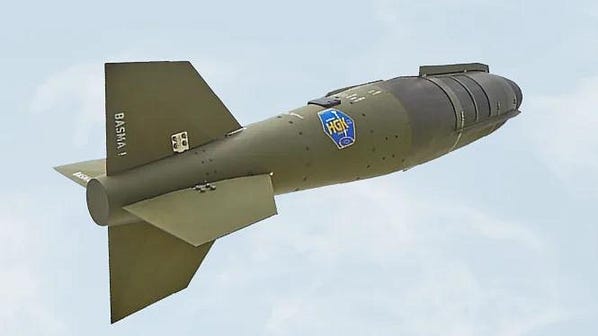
General purpose bombs and penetrating bombs are being transformed into smart bombs with precise strike capability through HGKs, which are now being delivered.
MPT-55 National Infantry Rifle

Production has begun on the MPT-55, which has a high shooting capability, to meet the security forces’ need for 5.56 mm infantry rifles. The rifle, which has short and long barrel versions and can fire 5.56×45 mm NATO ammunition semi-automatically and fully automatically, stands out with its light and effective weapon feature.
SSB INVESTMENTS

The names of seven companies established by the Presidency of Defense Industries (SSB) in Turkey with the aim of advanced technological production have been shared with the public for the first time: SSTEK Defense Industry Technologies Inc., DeltaV Space Technologies Inc., ULAK Communication Inc., TRMotor Power Systems Industry Inc., YİTAL Inc., TRD Microelectronics Industry Inc. and TRTEST Test and Evaluation Inc.
DELTAV Space Technologies Inc.

Established with the aim of designing and producing hybrid fuel rocket technologies. Today, it operates in the development, demonstration, and production processes of chemical rocket engine technologies that can be used in advanced space applications. In this context, rocket engines, motor sub-technologies, probe and launch systems, and test and launch infrastructure for these systems are being developed.
Turkey Cybersecurity Cluster

Established under the coordination of SSB, the aim of the cluster is to meet all the needs in the public and private, military and civilian cybersecurity fields with local and national solutions. Currently, 230 member companies are working towards this goal. In addition, cybersecurity training is provided to students and teachers in vocational schools, and support is provided to talented students and beginner-level companies through various competitions and programs.
2018
HÜRKUŞ-C Next Generation Light Attack/Armed Reconnaissance Aircraft

The national aircraft HÜRKUŞ, a product of Turkish engineers, has been developed into an armed version named HÜRKUŞ-C. Designed and produced to perform armed reconnaissance and light attack missions in addition to pilot training. The platform can respond to different needs on the battlefield, with 7 external load stations and a large payload capacity, and can operate at high altitudes, in challenging terrain and weather conditions.
VISIONARY YOUTH

The VISIONARY YOUTH project, designed to create a platform for the supply and development of qualified human resources in the defense industry, has been launched. The VISIONARY YOUTH portal, where young people can access internship and job opportunities and share projects, while keeping on growing every year.
Frigate Modernizations

Barbaros class frigates’ Half-Life Modernization Project has been launched, which includes the integration of systems produced using local capabilities and abilities instead of the existing warfare and weapon systems, as well as the development of necessary software and hardware.
TEKNOFEST


TEKNOFEST Aviation, Space and Technology Festival, which is the first and only festival aimed at developing Turkey’s national technologies and contributing to the engineering-based human resources, was organized for the first time by the Ministry of Industry and Technology and T3 Foundation. TEKNOFEST, where competitions in focus technology areas of the future are held, as well as various exhibitions and shows are organized, has quickly become the world’s largest festival in its field.
Turkish Defense Industry Summit

The Turkish Defense Industry Summit was held for the first time under the auspices of President Recep Tayyip Erdogan. The summit brought together civilian and military top-level officials who play a role in the sector, and three panels titled “Defense Industry in the Entrepreneurship-Investment-Export Chain,” “Qualified Human Resources for the National Industry Campaign,” and “Technology-Innovation-Production Trilogy” were held.
KIRPI II Mine Protected Vehicle

The first delivery of KIRPI II vehicles produced within the scope of projects carried out by the Defense Industry Presidency to meet the needs of security forces has been made. KIRPI II, the new version of KIRPI which stands out with its superior level of mine protection, has an independent suspension system and various hardware options that can respond to many different tasks and needs.
ULAK Fourth Generation (4.5G/LTE Advanced) Communication System

The first deliveries of the ULAK base station, developed with domestic resources and equipped with fourth-generation technology for use in critical services for public safety and emergency communication infrastructure, have been made. Designed in compliance with international standards, ULAK allows multiple operators to provide services through a single base station simultaneously.
SARP Remote Controlled Stabilized Weapon System

The first deliveries of SARP, designed to be used against air and land threats in tactical vehicles and fixed installations, have been made. SARP, which provides night and day surveillance, target detection and tracking capabilities, can be equipped with weapons suitable for different tasks and needs.
Export of Supply Tanker at Sea

The PNS MOAWIN, the largest military ship built by Turkey for Pakistan Navy’s needs and requests, has been delivered.
BORA MISSILE

Previously, the national missile system BORA, which provided fire support to maneuver units with accurate and effective firepower in a tactical operation, has entered the inventory. BORA, which has a short preparation time for firing and high shooting accuracy, can be used in all types of geography and weather conditions.
LGK Laser Guidance Kit

The first delivery of LGK to the Turkish Armed Forces was made, which converts MK-82 and MK-84 general purpose bombs into smart ammunition with high accuracy, increased firing range, lower secondary damage, and post-shot target change capability.
ANKA-S Satellite-Controlled UAV

The first delivery of ANKA-S, which can perform day and night reconnaissance, surveillance and marking tasks even in harsh weather conditions, has been made. ANKA-S has autonomous flight capability and a new generation national high-resolution day-night camera, and can be controlled via national satellites and the Turkish Armed Forces Communication System. Particularly, the ability to control it from a satellite enables ANKA-S to reach a mission range of thousands of kilometers.
RETINAR PTR Environmental Surveillance Radar

The domestic radar RETINAR PTR, designed for area surveillance, border, and environmental security, has entered the TAF inventory. RETINAR PTR is a low power consumption and easily portable radar that can successfully detect, track, and classify humans, animals, and vehicles.
TEBER Laser Guidance Kit

The TEBER system has been added to the inventory by transforming MK-81 and MK-82 general-purpose bombs into intelligent weapon systems, providing them with the ability to make precise hits against stationary and moving targets.
BOZOK Laser Precision-Guided Mini Ammunition
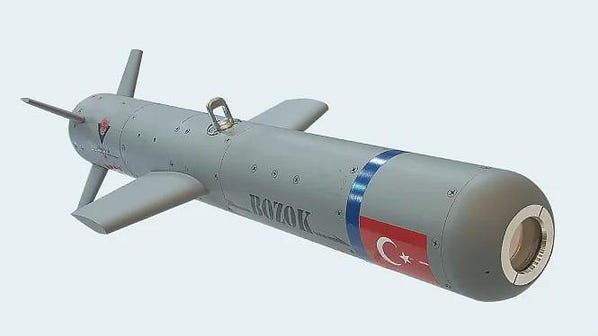
The first successful tests of the precision-guided BOZOK, a sensitive laser developed to give attack capability to unmanned aerial vehicles and to enable effective defense in combat without endangering friendly elements, have been carried out. Designed as a light and miniature ammunition, BOZOK provides operational flexibility to UAVs with limited carrying capacity.
CAFAD Multi-Purpose Phased Array Radar

ÇAFRAD, which can detect and track multiple targets simultaneously and direct guided missiles, including those fired from weapon systems, during flight to the target, has successfully passed the Phase-1 Project Acceptance Tests. The radar systems of ÇAFRAD, which can be used together and can be integrated separately into different platforms, including land, air, and water platforms, are also included.
PD170 Unmanned Aerial Vehicle Engine

As part of the Operational UAV Engine Development Project, the delivery of one of the first prototypes of the PD170, the first national turbodiesel UAV engine developed by Turkish engineers, has been made. ANKA made its first flight with PD170. PD170, which has 170 horsepower and a ceiling altitude of 45,000 feet, is currently actively used in UAVs in the inventory of the Turkish Armed Forces.
CATS Electro-Optic System

IHA, electro-optic reconnaissance, surveillance and targeting system developed for air platforms such as helicopters and planes. CATS, which has a lightweight and small structure, can perform simultaneous multiple target tracking and precise location detection, and can operate at very low temperatures at high altitudes.
Friend-Foe Identification and Introduction System Project

As part of the project, original MOD5/S capable systems, developed in compliance with NATO standards, have been produced. These systems are used in the modernization of aircraft in the inventories of the Air Force Command and Naval Forces Command.
KARGU Portable Rotary Wing Strike UAV System

KARGU, which can be carried by a single person and can perform reconnaissance, surveillance, target detection, and destruction missions in high-risk areas, has entered the inventory. KARGU, which is effective against stationary and moving targets with its precise strike capability, can be reused thanks to its mission cancellation and return to home functions.
KARA SOJ (CORAL) Mobile Radar Electronic Warfare System

The delivery of KORAL, which enables the functions of detection, diagnosis and finding direction, as well as the mixing and deceiving of radar and rendering them useless, integrated into land, air and water platforms by receiving the echoes of radio waves to detect the position and distance of objects, has been completed.
ALTAY Main Battle Tank

The serial production contract of ALTAY, developed as the third generation main battle tank in Turkey in line with the modern tank needs of the Turkish Armed Forces, has been signed. ALTAY, which has high level durability, high firing power, and the ability to rotate 360 degrees in both directions around its own axis, is designed to operate in challenging conditions thanks to its protective armor against radioactive and biological threats.
BATU ALTAY Power Group

As part of the ALTAY Project, a decision was made to develop a 1,500 horsepower engine. The first firing of BATU, which was developed to meet the power needs of tanks in the inventory, including the main battle tank ALTAY, took place in 2021.
AKKOR Active Protection System

Unconventional and conventional warfare AKKOR, which provides 360-degree protection against anti-tank threats, has passed the tests successfully. AKKOR, which can detect potential threats quickly with its high-tech radar, can be integrated into many armored vehicles, especially the main battle tank ALTAY.
SOM-J Joint Strike Aircraft Compatible National Cruise Missile

SOM-J missile has been developed to be used against heavily protected moving water and stationary land targets. SOM-J, which can be used in the internal weapon station or under the wing of aircraft, offers flexible solutions in air operations thanks to its long-range, low-visibility, and universal weapon interface-compatible structure.
SARPER Synthetic Aperture Radar

SARPER, developed for aerial surveillance and imaging needs, has entered into service, which can perform high-resolution imaging and moving target detection in all kinds of weather conditions. With its modular structure, SARPER can be integrated into manned and unmanned aerial platforms and is used in military and civilian applications.
OMTAS Medium Range Anti-Tank Weapon System

Thanks to the infrared imaging seeker head, the medium-range anti-tank missile OMTAS, which can operate in all weather conditions day and night, has been developed and put into serial production with the ability to detect targets by detecting infrared waves, lock onto the target and track it until it is destroyed. OMTAS, which has precision guidance and control capabilities and an armor-piercing tandem warhead, is an effective weapon system against all stationary and moving armored threats.
TORK Torpedo Defense System Against Torpedoes

TORK, developed to destroy all types of guided and unguided torpedoes launched from surface ships and submarines, successfully completed its first tests. TORK, which can work integrated with other torpedo countermeasure systems, thus maximizes its effectiveness.
EYDEP Industrial Competency Assessment and Support Program

EYDEP was initiated by SSB to determine the competency levels of companies operating in the defense industry and to support these companies in improving their competencies.
TS1400 Turbo Shaft Engine

As part of the Turbo Shaft Engine Development Project initiated for the first domestic general purpose helicopter GÖKBEY, the core engine, which forms the main heart of the original and national TS1400 turboshaft engine, was produced as a preliminary prototype and its first ignition was successfully carried out.
Presidency of the Republic of Turkey Defense Industry Presidency (SSB)

The Undersecretariat for Defense Industries was restructured as the Presidency of Defense Industries of the Republic of Turkey in 2018. This marked the beginning of the 5th era in the history of Turkish defense industry. PDI continues to work towards meeting Turkey’s defense industry needs with local and national capabilities at the highest level.
2019
ŞAHİ, TUFAN and SAPAN Electromagnetic Launch System Projects

The Electromagnetic Launch Technologies Center, established under the coordination of SSB, aims to create cooperation and synergy among institutions and companies, bringing together existing capabilities in the country and developing the systems needed for national security. The center has adopted a mission to shape the future in this field. Currently, various institutions and organizations continue to develop electromagnetic weapon systems in line with this mission.
T70 General Purpose Helicopter

The first T70 helicopter, which will be produced to meet military and civilian needs within the scope of the General Purpose Helicopter Program bringing together competent companies in the Turkish defense industry, has been taken out of the hangar.
KERKES

The KERKES-Global Positioning System-Independent Autonomous Navigation System Development Project has been initiated to enable fixed-wing and rotary-wing UAVs to perform missions in GPS-free environments. The project was approved in 2022. KERKES uses artificial intelligence and image processing techniques to match the UAV’s pre-loaded air/satellite photos with images taken from the UAV camera, allowing the UAVs to autonomously reach target areas with little or no human intervention.
KAPLAN and PARS Armed Vehicles


Domestically produced by OMTAS, both KAPLAN and PARS have the ability to co-operate with battle tanks. Both can operate at high speeds and day/night in any terrain.
Tank Modernizations


As part of the Euphrates M60T Project aimed at modernizing the tanks in inventory, the tanks modernized were upgraded to the M60TM configuration. Afterwards, modernization of Leopard 2A4 tanks began.
Preveze Class Submarine Half-Life Modernization Project

The contract for the modernization project of four Preveze-class submarines in the inventory of the Naval Forces Command has been signed. In the scope of the project, in addition to improving the existing systems and capabilities of the submarines in line with the requirements of modern combat conditions, it is also aimed to make maximum localization.
UNMANNED GROUND VEHICLES (UGV)

Prototypes of domestic light-class UAVs with different weights and types were developed to provide support to the security forces in cave, inhabited area, multi-story building and wide land operations. Field tests of ACROB, GEKO, KOMODO, EJDER and MERLIS, which were introduced for use, are being conducted, while projects for medium and heavy-class UAVs have started.
Laser Weapon System Projects


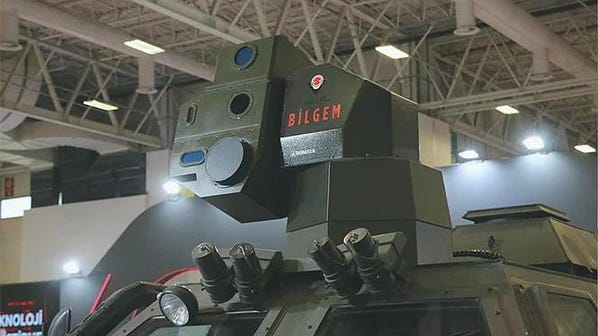
As part of the High-Power Laser System Project carried out by the Laser Technologies Center of Excellence established under the coordination of SSB, a prototype product was developed and the acceptance procedures of the product were completed. In addition, a vehicle-mounted laser system designed as a mobile system was accepted, and a project was initiated to supply ALKA (Directed Energy Weapon System) in different platforms and power levels in line with user needs.
TCG UFUK Test and Training Ship

TCG UFUK (A-591), which has the distinction of being Turkey’s first testing and training ship, was launched into the sea. A Ada class corvette developed with the experience gained from corvettes that are equipped to fight submarines and that have both sail and paddle propulsion, TCG UFUK has the ability to make uninterrupted voyages, including in international waters under heavy climate and sea conditions, for 60 days. It entered service in 2022.
ED SYSTEM

The first Electronic Support System was delivered as part of the Electronic Support/Electronic Attack Systems Project, which aims to increase the electronic warfare capabilities of the Turkish Armed Forces with the purpose of using the electromagnetic spectrum for the benefit of friendly elements and restricting the use of enemy elements. The Radar system, which is integrated into land, air, and sea platforms and can detect the location and distance of objects by picking up echoes of radio waves, and Electronic Support/Electronic Attack systems, which detect and identify electronic systems belonging to friendly or enemy forces in electronic warfare, including the use of anti-radiation missiles against enemy electronic systems, are included in this project.
HIZIR 4×4 Tactical Wheeled Armored Vehicle

HIZIR, designed to perform at high levels in intense conflict conditions in rural and urban areas, has entered the TSK inventory. HIZIR, which has a high ballistic and mine protection level, can be configured according to different needs.
MUKAS Communication Mixing and Deception Simulator

Turkey’s first communication electronic warfare training system MUKAS has been delivered. Developed for the training of communication electronic warfare operators serving on the Turkish Armed Forces’ land platforms, MUKAS enables the enhancement of operators’ technical capabilities through its realistic electronic warfare experience.
SPRAYED BOUQUET LINE

The installation of ODTÜ-SCATTERED BEAM LINE, which is Turkey’s first Particle Radiation Test Infrastructure that will reduce foreign dependency in satellite and space studies, has been completed.
T700-TEI-701D ENGINE
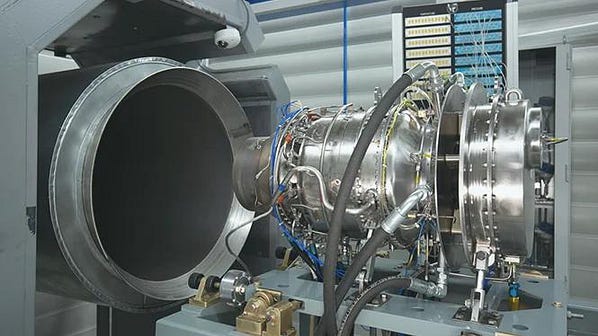
The first T700-TEI-701D engine produced for the T70 General Purpose Helicopter has been delivered.
ADVENT Network-Supported Data Integrated Warfare Management System

The new generation national war management system ADVENT, which is recognized as one of the best war management systems in the world with its network support capability, has been integrated into TCG KINALIADA.
Rapid Patrol Boats and New SAT Boats


The first deliveries of Rapid Patrol Boats and New SAT Boats have been made. Rapid Patrol Boats were produced for the safety and intervention, exploration and patrol, patrol and escort, fight against smuggling and search and rescue missions in the exclusive economic zone. New SAT Boats were developed to ensure the rapid transfer and safety of SAT teams to their operational areas.
AKINCI Attack Unmanned Aerial Vehicle


The AKINCI Attack UAV, which has a unique twisted wing structure with a wingspan of 20 meters and can carry numerous national intelligent munitions, has completed its first flight. The high-altitude and long-endurance class AKINCI UAV’s first deliveries were made in 2021. The AKINCI UAV, which can perform its duties in all conditions day and night, incorporates technologies such as electronic warfare systems, satellite communication systems, air-to-air radar, and a synthetic aperture radar system with trigger openings. It also offers advanced flight and diagnosis functions thanks to its unique artificial intelligence system.
2020
F-16 Modernizations
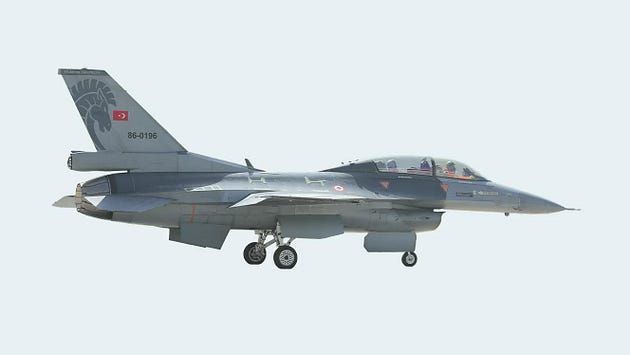
As part of the Structural Improvement Project for F-16 initiated by the Presidency of Defense Industries, the first two F-16 Block-30 aircraft were delivered to the Air Force after completing the structural improvements. The project, which covers the modernization of a total of 35 aircraft, aims to extend the structural lifespan of F-16 aircraft, the main striking force of the Air Force.
AKSUNGUR Armed Unmanned Aerial Vehicle

The AKSUNGUR UAV, capable of performing day and night reconnaissance, surveillance, intelligence and attack missions, has started serial production. The first delivery of the AKSUNGUR UAV, which has a high payload capacity and automatic flight control and takeoff-landing systems, was made in 2021. The AKSUNGUR UAV, which can be equipped with various air-to-ground weapons, is capable of performing long-duration operations thanks to its two dual-turbocharged diesel engines.
The First Turkish Spacecraft

The first domestic probe rocket launched as part of the Micro Satellite Launch System Project reached an altitude of 130 kilometers and became the first Turkish vehicle to enter space.
TRLG-230 Next Generation Artillery Missile

TRLG-230 Missile System has been developed, which can hit targets marked by UAVs and UCAVs on the ground, thanks to the integration of a laser seeker head. The system has a mechanism with propulsion engines that can be updated during flight orbit according to the target and external geometry that reduces air friction.
SUNGUR Air Defense System

SUNGUR, which can be integrated into different platforms for use in the air defense of stationary or moving units and facilities, has been developed. It has an infrared imaging seeker and a high explosive fragment penetrating warhead, allowing for effective defense against UAVs, jets, and helicopters.
DEFENSE NEWS TOP 100: 7 Turkish Companies Among Top Defense Giants

The number of Turkish companies on the list of the world’s most prestigious defense industry firms, prepared by military publishing institution Defense News, increased to 7 in 2020. On the list, ASELSAN ranked 48th, TUSAŞ ranked 53rd, BMC ranked 89th, ROKETSAN ranked 91st, and STM ranked 92nd. FNSS, which entered the list for the first time this year, ranked 98th, and HAVELSAN ranked 99th.
PORTABLE AMMUNITION SYSTEMS
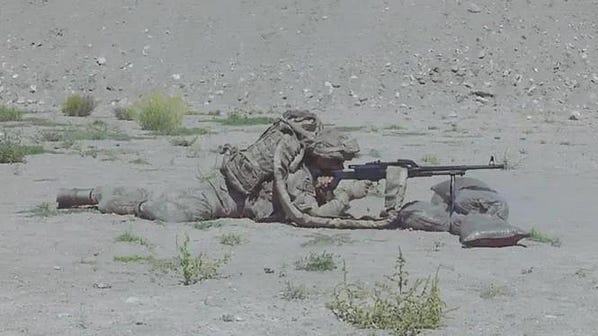

PORTABLE AMMUNITION SYSTEMS that provide uninterrupted firing capability for 7.62 and 5.56 machine guns have been introduced for the first time. These systems have a lightweight, durable, and ergonomic design, can be used by a single soldier, can be adjusted according to body characteristics, and provide significant advantages to security forces in the field by providing instant firepower without any assembly or disassembly processes.
Explosive Substance Production Facility

Missiles and rockets require raw materials for explosive warheads and the ROKETSAN Explosive Material Production Facility, which reduces foreign dependency, has been put into service.
URGENT INTERVENTION AND DIVING TRAINING BOAT

Two EMERGENCY RESPONSE AND DIVING TRAINING BOATS, developed for use in diving trainings and emergency support and intervention tasks during diving operations, have been delivered to the Navy. The boats, used in shallow and deep water diving trainings, contribute to increasing the diving capabilities of personnel.
KIRAÇ Next Generation Criminal Investigation Tool

The first of the KIRAÇs produced within the scope of the Next Generation Criminal Investigation Tool Project has been delivered to the General Directorate of Security. Designed to be configured as an armored personnel carrier, command and control vehicle, and internal security vehicle, KIRAÇ can serve in all kinds of weather and road conditions. In addition, it enables versatile equipment use with its extra load capacity.
UNMANNED GROUND VEHICLES (UGV)

The serial production contracts for the light-class UAVs developed in accordance with the needs of the Turkish Armed Forces and the Mid-Class Level II UAV Contract have been signed.
KARAKULAK High Frequency Cutting and Listening System

Electronic warfare system KARAKULAK has entered the inventory of the Turkish Armed Forces. KARAKULAK, which has features such as high mobility in tactical field, ergonomic system design in which all equipment can be carried on the vehicle, target direction finding and location determination, and listening and recording capability, can work in coordination with two or more systems.
Satellite Launch Space Systems and Advanced Technologies Research Center

The micro satellite launch system, precision guided mini and micro weapon systems, hypersonic systems and laser weapons studies are being carried out within the Satellite Launch Space Systems and Advanced Technologies Research Center established under ROKETSAN.
YETEN Defense Industry Capability Inventory

The Talent Inventory-YETEN Portal has been launched, which enables the collection of human resources, inventory, product, and infrastructure information of institutions operating in the defense industry sector in a single center and the automation of all kinds of analysis and evaluation while keeping HTML tags.
First Domestic Respirator

New R&D projects have been initiated and existing projects have been accelerated in the areas where experience gained in the defense industry is needed to be transferred to the healthcare sector. In this context, the first domestic respiratory device has been produced.
2021
Ukraine Corvette Construction Project

The first corvette built for the Ukrainian Naval Forces Command under the Ukraine Corvette Construction Project signed by STM as the main contractor in 2020 was laid down in Istanbul. The corvette is equipped with weapons against submarines and is both a sailing and wheel warship.
ULAQ USV Armed Unmanned Sea Vehicle

The serial production of ULAQ SİDA, Turkey’s first combat unmanned sea vehicle, has started after successfully completing tests. With a cruising range of 400 kilometers, a speed of 65 kilometers per hour, day and night vision capabilities, and a national encrypted communication infrastructure, ULAQ SİDA has been developed for tasks such as reconnaissance, surveillance, intelligence, naval warfare, asymmetric warfare, armed escort, and force protection.
ALBATROS-S Flock USV

The ALBATROS-S Swarm Unmanned Marine Vehicle Project, which aims to provide autonomous movement capability to unmanned marine vehicles in groups without human intervention or with very little human intervention, has been announced to the public. ALBATROS-S, which is developed domestically and nationally, aims to enable Turkey to achieve a capability that few countries in the world possess.
MEDIUM AND HEAVY CLASS UNMANNED GROUND VEHICLES

As a result of prototype competition activities for middle-class level IKA’s, ASLAN, BARKAN, FEDAI, and HANCER were made available for use by security forces. In addition, the unmannedization of M113 vehicles in inventory and the production of heavy-class IKA’s with autonomous capabilities began.
PMT 7.62 National Machine Gun

The first national 7.62 mm machine guns developed for platforms (PMT 7.62) have been delivered to the General Command of Gendarmerie. PMT 7.62, which offers the possibility of firing more with its fast barrel change feature, has a body life of at least 50,000 shots and a barrel life of 25,000 shots.
T129 ATAK PHASE-2 Attack and Tactical Reconnaissance Helicopter

The advanced version of the ATAK Helicopter, FAZ-2, which was produced to meet the Turkish Armed Forces’ attack helicopter needs, has started to be delivered. In the FAZ-2 configuration of the helicopter, there are electronic warfare and communication systems with a laser warning receiver aimed at using the electromagnetic spectrum for the benefit of friendly elements and restricting the use of enemy elements.
UTKU Next Generation Light Armored Vehicle Power Group Project

The first prototype of UTKU, a cross-drive transmission and 1,000 horsepower engine developed for lightweight armored combat vehicles up to 40 tons, has been started.
BAYRAKTAR TB2 UAV

BAYRAKTAR TB2, which has previously been exported to Azerbaijan, Qatar, and Ukraine, has been exported to Poland, a NATO and EU country, for the first time.
HİSAR Air Defense Missile Systems

The HİSAR missile family, consisting of HİSAR-A+ and HİSAR-O+ which can be integrated into different platforms thanks to their modular structures and adapted to various shooting and command control infrastructures in order to protect military bases, ports, facilities and units from air threats, have been delivered to the Turkish Armed Forces. The systems can be effective against warplanes, helicopters, UAVs, cruise missiles, and air-to-surface missiles with jet engine propulsion and guided missiles with the ability to fly straight at a fixed speed against surface and land targets.
LDG Logistics Support Ship

The first ship produced within the scope of the LDG Project, which was initiated to increase the supply and logistics capabilities of the Turkish Naval Forces, has been delivered. The ships can carry containers, drinking water, and ship and helicopter fuels, and have a helicopter platform that enables the landing and supply of a 15-ton general purpose helicopter.
SANCAK High Frequency Electronic Attack System

The new generation communication electronic attack system SANCAK, developed to neutralize strategic communication systems, has been delivered to the Turkish Armed Forces. SANCAK, which is used against targets communicating in the high frequency band on different platforms, contains critical technologies.
ORKA Lightweight Torpedo

The 324 mm Torpedo Development (ORKA) Project was launched to meet the lightweight class torpedo needs of the Naval Forces Command. Developed entirely with national resources within the scope of the project, ORKA is designed as a high-speed and internally guided weapon system that can be used against submarines from surface platforms and aircraft, can detect targets with active/passive sonar head, and has the capability to be launched from both underwater and surface.
AKYA Heavy Class Torpedo

Deliveries have started for AKYA, Turkey’s first domestic and national heavy-class torpedo developed with the latest technologies. AKYA, which can be used against various class submarines and surface targets, has high speed, long range, active/passive sonar head, internal and external guidance features.
2022
T129 ATAK Helicopter

The ATAK Helicopter, developed using national capabilities, has been exported to the Philippines. Thus, the first exportation of ATAK has been realized.
BAYRAKTAR KIZILELMA (MİUS) Combat Unmanned Aerial Vehicle System

BAYRAKTAR KIZILELMA (MİUS), which has been developed entirely nationally and uniquely to be able to take off from short runway aircraft carriers and perform air-to-air combat with aggressive maneuvers, has completed its first flight. BAYRAKTAR KIZILELMA, which has low visibility, high situational awareness, in-sight and beyond-sight communication capabilities, can attack the designated target with the ammunitions it carries in its body.
BOYGA Rotary Wing UAV Carrying Air Munitions
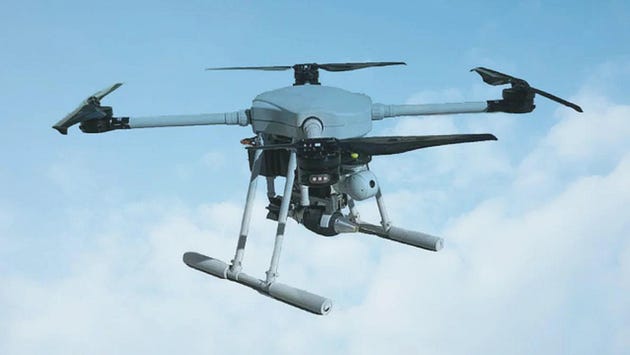
The BOYGA, which has the capacity to carry 81mm mortar ammunition, has entered the inventory. Developed with national resources to be used in asymmetric warfare environments and in the fight against terrorism, BOYGA can deliver its mortar ammunition to the target with full accuracy.
TOGAN Autonomous Rotating Wing Observer UAV System

The first delivery of TOGAN, developed for exploration, surveillance and intelligence tasks and can be carried and used by a single soldier, has been made. TOGAN is capable of tracking both optical and physical targets thanks to its advanced electro-optical and infrared camera systems and provides uninterrupted surveillance with its ability to operate autonomously in the air with little or no human intervention.
ŞAHİN 40 mm Physical Destruction System

The ŞAHİN, developed for the destruction of mini/micro UAVs, has entered inventory. With remote control capability, a range of 700 meters, and advanced electro-optical cameras, ŞAHİN can perform target detection and tracking in all weather conditions, day and night.
ELECTRONIC WARFARE SYSTEMS


VURAL and ILGAR electronic warfare systems, developed to increase the electronic warfare capabilities of the Turkish Armed Forces, have been delivered. VURAL is capable of performing electronic support and electronic attack missions against enemy communication systems, while ILGAR can execute electronic attacks against systems that communicate in different frequency bands, including the use of anti-radiation missiles. These systems provide significant advantages to security forces in tactical fields.
PMT 12.7 National Machine Gun

PMT 12.7 mm machine guns, previously procured from abroad, have been produced domestically for the first time. After successfully completing qualification tests, the machine guns have entered serial production and can be mounted on land, air, and sea platforms, as well as being used by infantry through a tripod, allowing for single or multiple shots.
MİLTAR National Screening System

The X-Ray Vehicle and Container Scanning Systems, which are produced by only seven countries in the world, have been developed using domestic and national resources within the scope of the National Screening System (MİLTAR) Project. The first of these systems was installed at the facility of the Ministry of Trade in Alsancak Port in İzmir.
KMC Mounted Javelin Weapon System

The first delivery of KMC, which was developed entirely with local and national resources to increase the capabilities of anti-tank units, was made. KMC, which has anti-tank missiles with high precision and destructive power that can be used together, 360-degree rotation and high maneuverability, can shoot at stationary and moving targets thanks to the stabilized turret system that can be controlled from inside the vehicle.
SUNGUR Portable Air Defense System

The portable version of SUNGUR, which has been developed to be integrated into different platforms for use in the air defense of stationary or mobile units and facilities, and which can be thrown over the shoulder by a single soldier, has been put into service.
KAPLAN MT Medium Weight Class Tank

The middle-class tank KAPLAN MT, whose serial production has been completed, has been exported to Indonesia. Thus, Turkey has realized its first tank export.
MMU Engineering Center
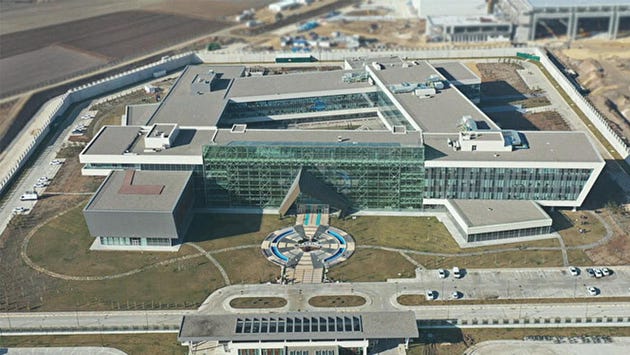
The National Combat Aircraft Engineering Center has been opened within the scope of the MMU Project. In addition, the Composite Production Building, which is Turkey’s largest composite facility, and the Space Systems Engineering Center have also been put into service.
MARLIN USV
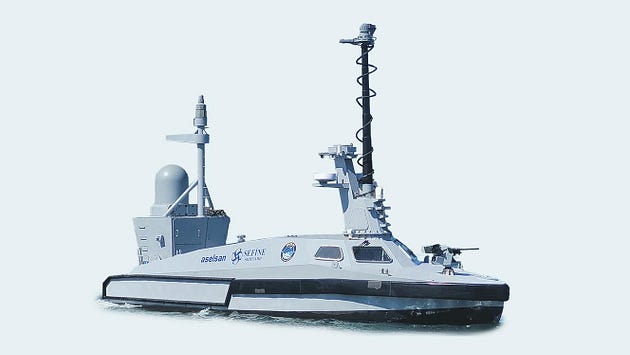
The MARLIN USV (Unmanned Surface Vehicle), the first unmanned sea vehicle with electronic warfare capability in the world, was developed with domestic and national resources. MARLIN USV, which can be equipped with various useful payloads, is designed and produced to perform reconnaissance-surveillance and intelligence, surface warfare, electronic support and electronic attack missions autonomously. MARLIN USV became the first unmanned sea vehicle representing Turkey in NATO by participating in the NATO exercise held in Portugal.
Sürü USV

Within the scope of the Autonomous Sea Vehicles Project, ALBATROSS and MIR USV performed their duties together. Thus, Turkey successfully tested the swarm concept it created with two different sizes and capabilities of IDAs in the field.
SANCAR USV
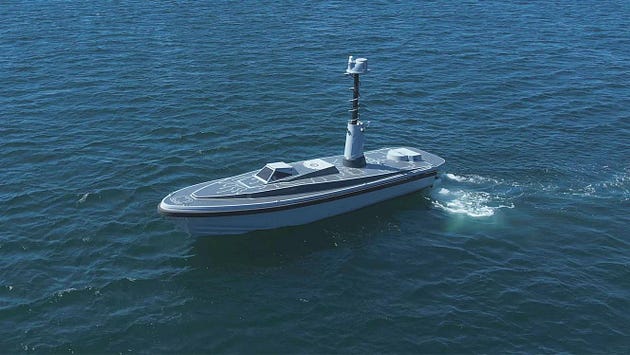
SANCAR USV (Unmanned Surface Vehicle), one of the new members of Turkey’s family of armed unmanned sea vehicles, has successfully completed its initial tests. With its modular structure, it can be equipped with different payloads and can perform fully autonomous missions, designed for use in reconnaissance, surveillance and intelligence, search and rescue, port and base protection activities and surface warfare.
SALVO USV

The firing tests of SALVO USV (Unmanned Surface Vehicle), developed with domestic capabilities for the execution of tasks such as exploration, surveillance, detection, diagnosis, identification, and classification, have been successfully performed. SALVO USV, which has a modular structure and can be equipped with different payloads, contains a surface-to-surface and surface-to-air guided missile system and a 12.7 mm stabilized machine gun system.
PARS IV 6×6 Mine Protected Vehicle (MPV)

The PARS IV 6×6 Mine Protected Vehicle, which was developed according to the needs of the Turkish Armed Forces and first assembled in 2020, has entered the inventory. The vehicle, which has a new generation of high protection capability and a remotely controlled weapon system, can safely transport personnel to target areas in all kinds of terrain and weather conditions and provide fire support when necessary.
Air Traffic Radar System

The first radar system developed for military and civil aviation, which can detect the location and distance of objects by receiving the echoes of radio waves integrated into land, air, and sea platforms, has been delivered to the Air Force Command. The system enables air traffic to be managed with a national radar system.
Renewal of SSB Logo

The SSB emblem has been renewed in a way that creates a unified appearance with the emblems of the Presidency, ministries, and other affiliated institutions.
KTJ-3200 Turbojet Missile Engine

Deliveries have started for the KTJ-3200, which is developed domestically for use in missiles with a mechanism that has propulsion engines that can be updated during flight based on the target’s orbit and external geometry that reduces air friction, and can be used as a power source for all platforms that perform air-to-surface or surface-to-surface missions.
2023
TCG ANADOLU Multipurpose Amphibious Assault Ship (LHD)
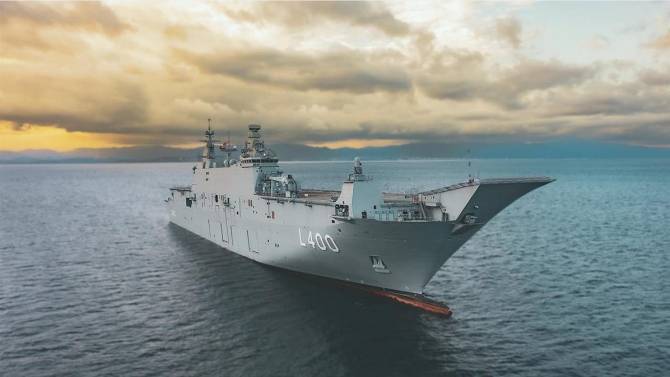

The delivery of TCG ANADOLU, the world’s first UAV ship and Turkey’s largest military naval platform, has been made. TCG ANADOLU has a flight deck that enables various aircraft to operate day and night, and can transport the necessary combat and support vehicles to crisis areas without main base support with an amphibious battalion, and participate in landing operations with landing vehicles carried in the pool.
KAAN National Combat Aircraft (NCA)

KAAN, designed and produced with domestic resources as a fifth-generation multi-role fighter jet, took off for the first time. It is equipped with features that are necessary for a new generation aircraft such as low visibility, high maneuverability, increased situational awareness and sensor fusion, as well as an internal weapon bay, and is capable of performing both air-to-air and air-to-ground missions.
GÖKDENİZ Close Air Defense System

GÖKDENİZ, developed to meet the low-altitude air defense needs of naval platforms, has started to be integrated into the ships. The system, obtained by adapting KORKUT to naval platforms, has features that will enable it to be effective against threats such as anti-ship missiles, as well as helicopters, planes, drones, and surface vehicles.
HÜRJET Jet Training and Light Attack Aircraft

HÜRJET, designed and developed to meet the Turkish Air Force’s jet training and close air support aircraft needs for supporting ground operations and destroying enemy targets from the air, completed its first flight. As Turkey’s first jet-powered aircraft, the armed variant of HÜRJET has capabilities such as air-to-air and air-to-ground firing ability and high useful payload capacity. HÜRJET, which has a wide range of missions, can play an important role in combat areas as well as modern combat aircraft training.
T929 ATAK II Attack Helicopter

Developed entirely with local and national capabilities in line with the goals of increased useful load and ammunition capacity, modern avionic systems, reduced logistics costs, and high performance, ATAK II performed its first flight. With a weight of 11 tons, ATAK II can undertake tasks such as reconnaissance and surveillance, air-to-air and air-to-ground combat, armed escort, and close air support, including the aerial destruction of enemy targets to support ground operations and firepower. ATAK II has the ability to operate in high temperatures and altitudes and perform operations during day and night.
İMECE Sub-Meter Resolution Earth Observation Satellite

With the experience gained from previous satellite projects developed domestically, IMECE has been successfully sent into space. IMECE, which can be used for civil and military purposes, allows Turkey to obtain high-resolution images from anywhere in the world with its own electro-optical camera.
KILIÇSAT Cube Satellite

The KILICSAT Cube Satellite, which enables obtaining the location and route information of ships in motion by bringing history to space with the domestically and nationally developed LNA (Low Noise Amplifier) module, has been launched into space.
ZAHA Armored Amphibious Assault Vehicle
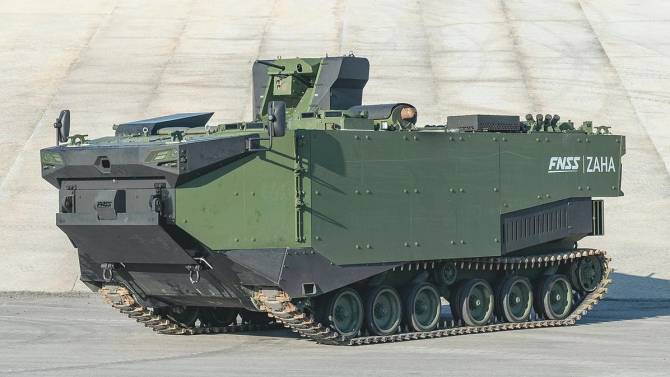
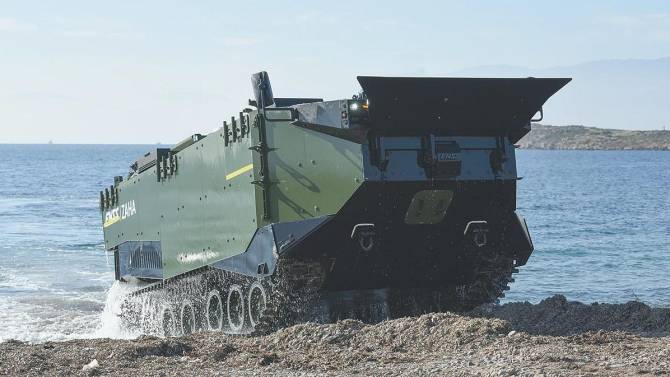
Amphibious landing craft ZAHA, designed according to the needs of amphibious landing forces and of which there are only two examples in the world, has been delivered for the first time. ZAHA, which can descend from docked landing ships while approaching the shore in amphibious operations, rapidly covers the distance between the ship and the shore, enabling the landing forces to reach the land as quickly as possible.
Near Future
ANKA III MIUS Combat UAV System

The ANKA III, a combat unmanned aerial vehicle system with delta wings and jet engine, is being developed with targets such as low radar visibility, high speed movement, and high payload capacity that can be integrated into land, air and sea platforms and can detect the position and distance of objects by reflecting radio waves. The first flight of ANKA III is planned to take place in 2023.
T625 GÖKBEY General Purpose Helicopter

The first indigenous general purpose helicopter GÖKBEY is being developed to operate in the most challenging climates and geographies, high altitudes and temperatures, and day and night conditions. GÖKBEY, which can be configured for many different tasks in civil and military fields, is planned to be delivered to the Gendarmerie General Command in 2023.
GÖKTÜRK-3 SAR Earth Observation Satellite

The Turkish Armed Forces are developing a Radar System with Trigger Aperture (SAR) Observation Satellite GÖKTÜRK-3, which collects images electronically to achieve high resolution by combining multiple receivers in different positions and angles. The goal is to obtain high-resolution images in day and night conditions from any region in the world with GÖKTÜRK-3. In addition to meeting military needs, the satellite is also expected to be used in civilian applications.
BOZDOĞAN — GÖKDOĞAN Air-to-Air Missiles

As part of the project initiated to produce Turkey’s first national air-to-air missiles, the active radar seeker head technology-equipped air-to-air missile BOZDOĞAN and the infrared imaging seeker head equipped visual range air-to-air missile GÖKDOĞAN’s tests are ongoing.
HAVA SOJ Remote Electronic Support/Electronic Attack System on Air Platforms

HAVA SOJ is being developed for the purpose of detecting/diagnosing and jamming enemy communication systems and radars. With HAVA SOJ, which will be designed and produced with domestic capabilities, it is aimed to achieve remote platform electronic support and electronic attack capability in air platforms.
TÜRKSAT 6A Communication Satellite

TÜRKSAT 6A, Turkey’s first national communication satellite, is being developed through a collaborative effort that supports and complements existing domestic capabilities. The satellite is planned to be launched into space in 2023.
YTD New Type Submarine

The New Type Submarine, whose project contract was signed in 2009, is the first submarine project of the Turkish defense industry in terms of both design and system creation. Thanks to its independent propulsion system, it will have the ability to operate under water for weeks in secrecy. Deliveries of YTD are planned to begin in 2023.
MUFS Micro Satellite Launch System Development Project

The project aims to enable Turkey to have the ability to establish a satellite launch, testing, and production infrastructure with which only a few countries in the world possess.
TF-2000 Air Defense Frigate

The project planned by the SSB for the Turkish Navy aims to produce an air defense destroyer. The destroyer is being developed to detect various guided missiles and ballistic missiles with the ability to target torpedoes, guns, and submarines, and to destroy guided missiles before they reach land.
HURM Hybrid Space Rocket Engine Development Project

The development of hybrid fuel space rockets with guided missile technology, which have an outer geometry that reduces air friction, is aimed to be used for launching satellites developed with national resources.
NATIONAL COMBAT AIRCRAFT ENGINE

The Original Engine Development Program for National Combat Aircraft (MMU) aims to develop an indigenous turbofan jet fighter engine for MMU using domestic and national capabilities.
NEW GENERATION KORAL Electronic Harp System Project

The NEW GENERATION CORAL, designed to have superior capabilities in detecting/mixing and dulling enemy elements according to the current CORAL, is expected to be able to operate against all old and modern enemy radar elements, which are integrated into land, air and water platforms and can detect the position and distance of objects by picking up radio waves, in Electronic Warfare System aimed at using the electromagnetic spectrum for the benefit of friendly elements and limiting the use of enemy elements.
MİLGEM 6, 7 and 8. Ships

Within the scope of MİLGEM Project, SSB tendered for 6th, 7th and 8th ships in 2022. It is envisaged that the ships will have more domestic and national equipment and weapon systems compared to previous ones.
BAYRAKTAR TB3 Armed Unmanned Aerial Vehicle
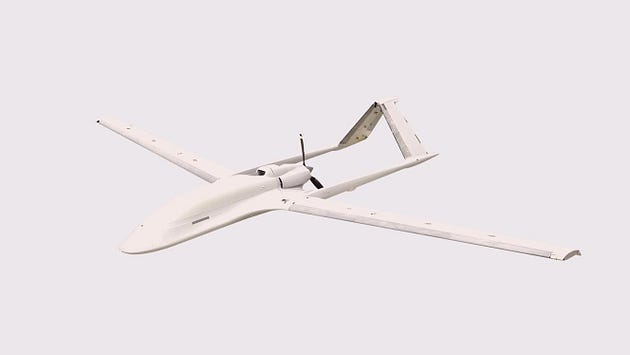
The BAYRAKTAR TB3 UCAV, designed to be national and unique in a way that can take off and land on short runways, is planned to make its first flight in 2023. Thanks to its foldable wing structure, the BAYRAKTAR TB3 UCAV can be used on both aircraft and helicopter carriers. In addition to reconnaissance, surveillance, and intelligence duties, it is being developed to carry domestic smart munitions with precise targeting and striking capabilities under its wings for air operations.
SIPER High Altitude Air Defense Missile System


The SİPER, a long-range regional air defense system designed and developed with domestic capabilities, is planned to enter inventory in 2023. SİPER, which will enable long-range and distributed architecture air defense of strategic regions and facilities against enemy attacks, stands out as the system with the longest range among national systems.
DERYA Naval replenishment combat support ship

The second largest ship of the Turkish Navy, DERYA, is planned to enter service in 2023. DERYA is being developed to perform refueling and water replenishment at sea, as well as to carry out certain level maintenance and repairs of manned and unmanned sea vehicles, helicopters, and UAVs. Serving as a command and control ship, DERYA aims to provide support for humanitarian aid, counter-piracy operations, search and rescue, and evacuation operations for non-combatants from the non-combatant class.
Istanbul Frigate I-Class Frigate

The first ship of the I class frigates of the MILGEM Project, TCG ISTANBUL (F-515), is scheduled to enter service in 2023. Designed by Turkish engineers to have a high local content rate, TCG ISTANBUL has the capability to perform submarine and surface warfare, air defense and advanced surveillance activities, reconnaissance-observation, target detection, diagnosis, identification and early warning missions. With TCG ISTANBUL, the design and integration of a complex surface warfare vessel that is compatible with modern technology and has high standards has been achieved for the first time in Turkey.
ÖZGÜR Project


The ÖZGÜR Project has been launched for the modernization of F-16 jets in the TAF inventory. Within the scope of the project, the first modernized F-16s with domestic avionics systems are aimed to be delivered in 2023.
KARAOK Short-Range Anti-Tank Weapon
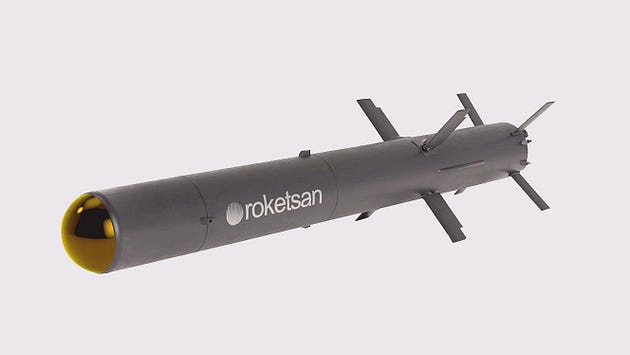
The portable anti-tank missile system KARAOK, equipped with an infrared viewer that allows it to operate day and night, is expected to enter inventory in 2023. It features a mechanism with external geometry that reduces air friction and propulsion motors that can be updated during flight based on the target, launched from a weapon system.
AESA Nose Radar


The AESA, which is designed for use in the modernization of F-16s and unmanned aerial vehicles in the inventory of the Air Force, is aimed to be put into service in 2023. Developed to perform many critical air-to-air and air-to-ground tasks such as long-range target detection, multiple and precise target tracking, high-resolution ground imaging and mapping, the AESA will be applied for the first time in AKINCI TİHA.
ERALP Early Warning Radar System

The Early Warning Radar System ERALP, developed with AESA technology in line with the needs of the Air Force, which is capable of detecting the location and distance of objects by receiving the echo of radio waves and integrated into land, air and water platforms, is aimed to be delivered starting from 2023.
MERT and MERTER Portable Electronic Attack Systems

The Portable Electronic Attack Systems MERT and MERTER, developed to meet the operational needs of security forces, are expected to be first used in 2023. These systems, which will prevent enemy communication in the V/UHF frequency band, including the use of anti-radiation missiles, are expected to be used to protect stationary facilities and moving vehicles.
I’ll try to update this cornerstone content piece as much as possible. Special thanks to SSB of Turkey.